We’d been told to stay indoors and not go out, except for exercise and if so to stay two metres apart, breathe fresh air, think separate thoughts and cast our own shadows. Stay safe, take care and not go viral. It was the sunniest Sunday I’d seen in ages, the car parks of Epping Forest were overflowing, all of us fleeing the city to escape the epidemic. That’s how it felt, as if there was protection here.
And there is, but you have to see it to believe it.
The spring sun was still low and casting long shadows, pointing us in the right direction.
We left the car at Golding’s Hill and walked down Green Ride to Hangboy Slade, the stream full of fresh, clear water rushing beneath our feet, washing away the troubles of the city, rinsing us clean.
Climbing up to Furze Ground we came upon the wreckage of a huge, devastated tree. A great double-stemmed beech minus one half of itself, its trunk split and fallen, its broken branches spilled across the ground. We were witnesses at the scene of a tragic accident, but we’d heard nothing, not a sound.
What happened here? Are all these fibrous tendrils a fungal infection that turned the wood to sponge?
A fallen tree leaves no shadow.
We found consolation over on the other side of Green Ride in the form of another double tree, this time an oak and again one half was more prolific than the other. Maybe it’s a semi-pollard. But it’s magnificent. I could have explored its shadows and light all day until the sun went down.
Last time we were here we must have overlooked this tree and passed by without noticing, since this wide open slope is normally covered with bracken and brambles and gorse, hence the name Furze Ground. But it’s recently been cut back and is now much more inviting, and just as we approached a startled ground bird flew up from under my feet, surprised at being denied its usual cover. Maybe now this new field will be grazed by the Epping Forest longhorns and become a new area of wood pasture?
Close by we found a squat little hornbeam with an explosion of branches, a great tangle casting fantastic shadows, inviting me to step into their welcoming embrace. How could I possibly resist?
I stood under its branches and it held me in its hand
I under stood its branches whilst its shadows I over stand.
Every picture has it’s shadows
And it has some source of light
Blindness, blindness and sight.
Fallen tree in black and white
Empty sockets await the night
Fallen watchtower, eyes shut tight.
All along the Ditches Ride the old trees kept the view
While all the shadows came and went, footsteps followed too
We walked the old embankment beside the main path, overlooking Copley Plain and its ranks of coppice and pollard beech. We stepped over their shadow glyphs, reading the signs, finding clues, seeing paintings and sculptures along the way – Mondrian, Marden, Moore, Penone, Nash and Klee. They’re all channelling aspects of this great overwhelming system of interwoven networks living and breathing around us. It seems like a forest is a gallery of naturally occurring interconnected artworks. I come here to absorb it, to be embraced by it, to feel part of something larger than myself and to find the forest within me. Paths and arteries, blood and sap, branches, synapses and mycorrhizal dreams.
To feel connected.
Beyond Jacks Hill we continued north beside Green Ride, but taking the high road, two metres apart between the trees along the bank, criss-crossed with shadow roots… Quick now, here, now, always.
At the sign of the asterisk tree.
Shadows and reflections. This part of the forest is called Thames Valley Bog.
And another double tree, this one a couple tree, an oak and a beech growing together as one.
An old slow-dancing couple turning together as I moved around them.
And then we stepped off the path and walked with the trees towards Ambresbury Banks.
Their shadows accentuate its curves.
We chased them around a circuit of the ancient earthwork.
These earthen banks once stood ten feet high, and the ditch sunk ten feet deep. There was a steep slope of twenty feet from the top of the bank to the bottom of the ditch. Their dramatic contours have softened over time, the bank collapsed into the ditch and covered with a thick blanket of leaf litter.
There is sense of stillness here, and profound quiet, and despite the Epping New Road running close by, we are removed from it, within a centred zone of time past and time present where all the trees whisper to each other, and their shadows weave a protective fabric to wrap around this safe arbour.
The British apply the name ‘strongholds (oppida)’ to densely wooded spots fortified with a rampart and ditch, to which they retire in order to escape the attacks of invaders.
Julius Caesar: The War in Gaul, V.21.
We came around full circle, back to where we’d come in, through the bars of these shadow-striped ramparts into a place of confinement, this long lost hillfort, arboreal sanctuary, woodland refuge, safe retreat, it’s here if you know where to find it, out of sight, gone to ground, why wait to be hunted to hide, run for the shadows, keep your head down, keep your nose clean, be safe, take care, waiting for the great leap forward, waiting for a brave new world… Until then, we’ll hold this in our mind’s eye.
Stay two metres apart and measure the shadows.


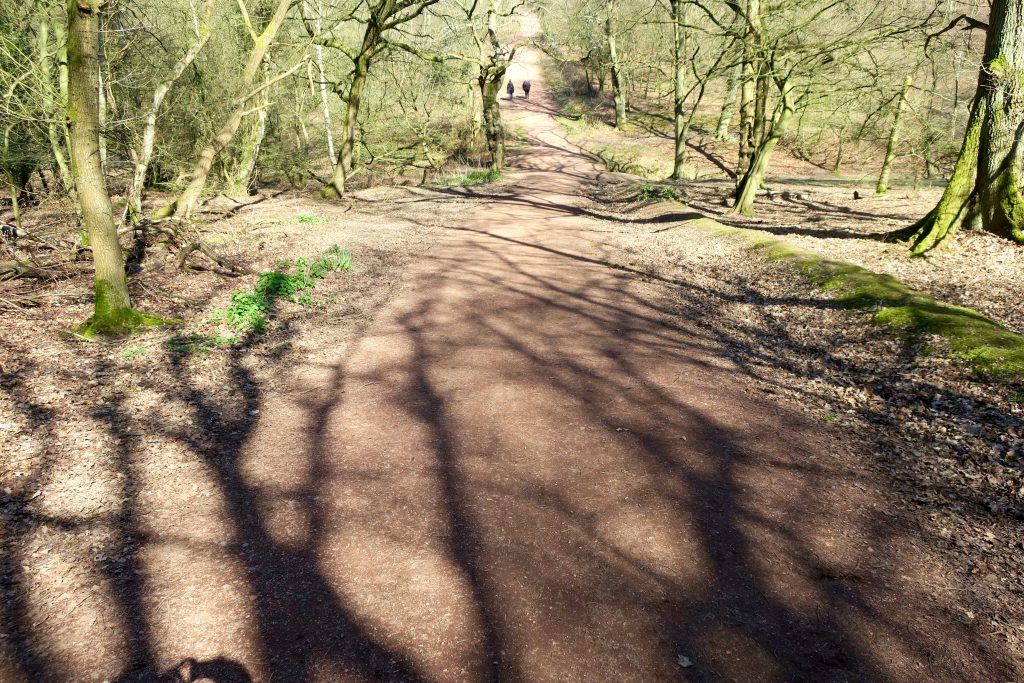
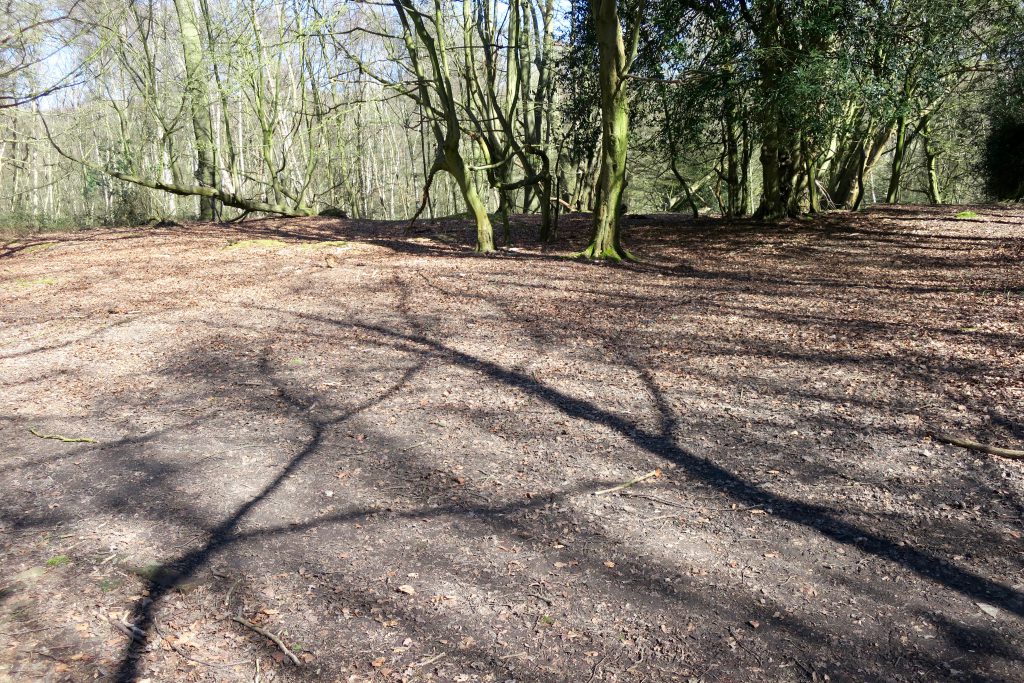
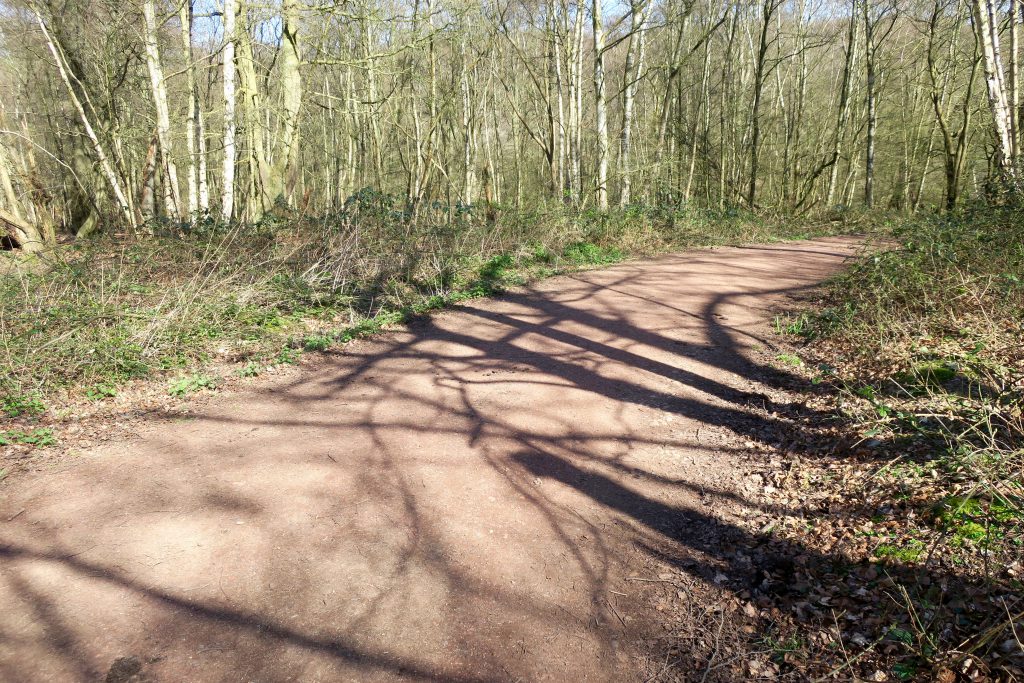
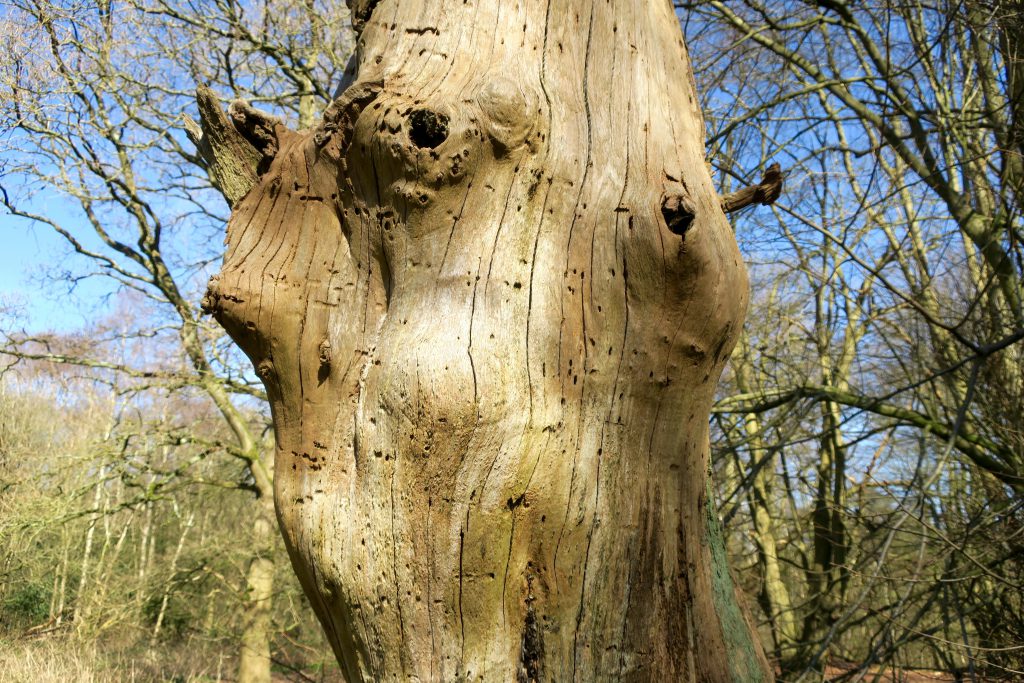
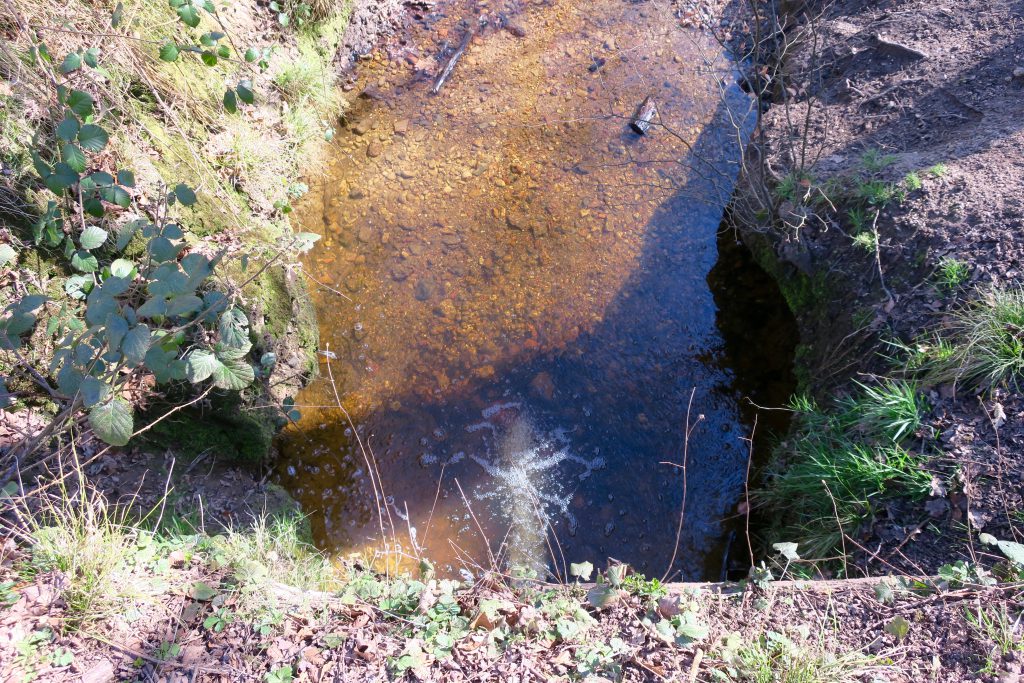
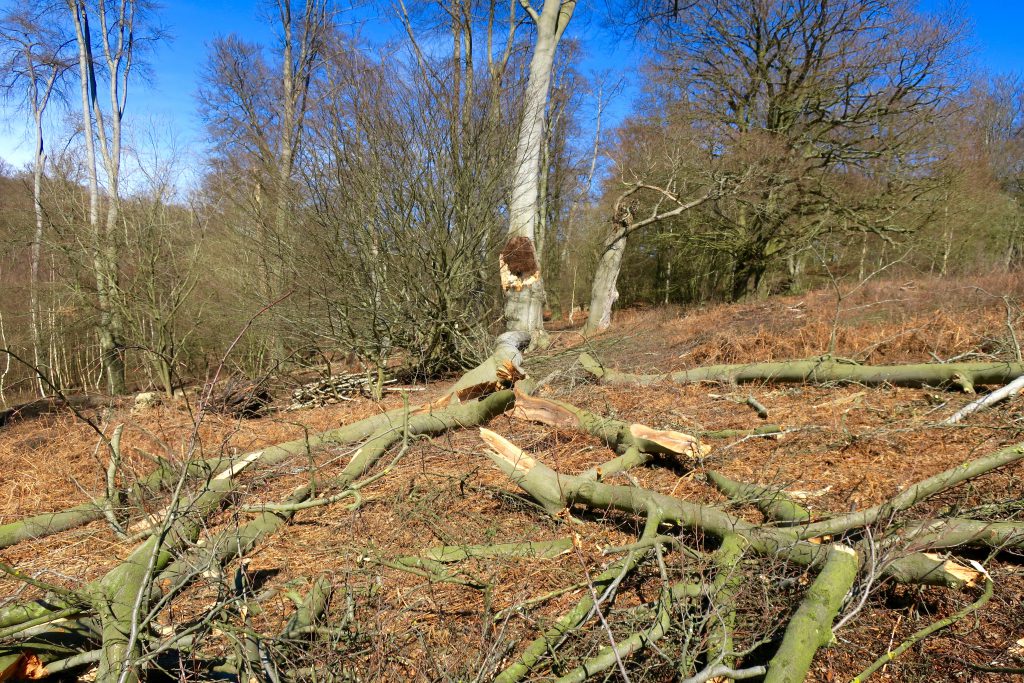
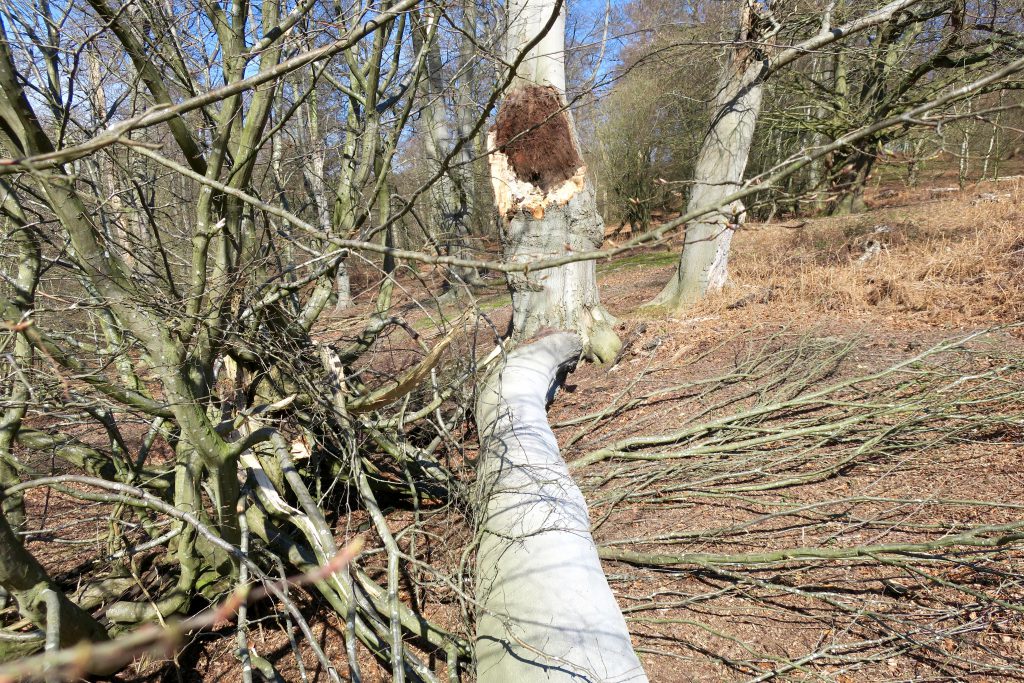
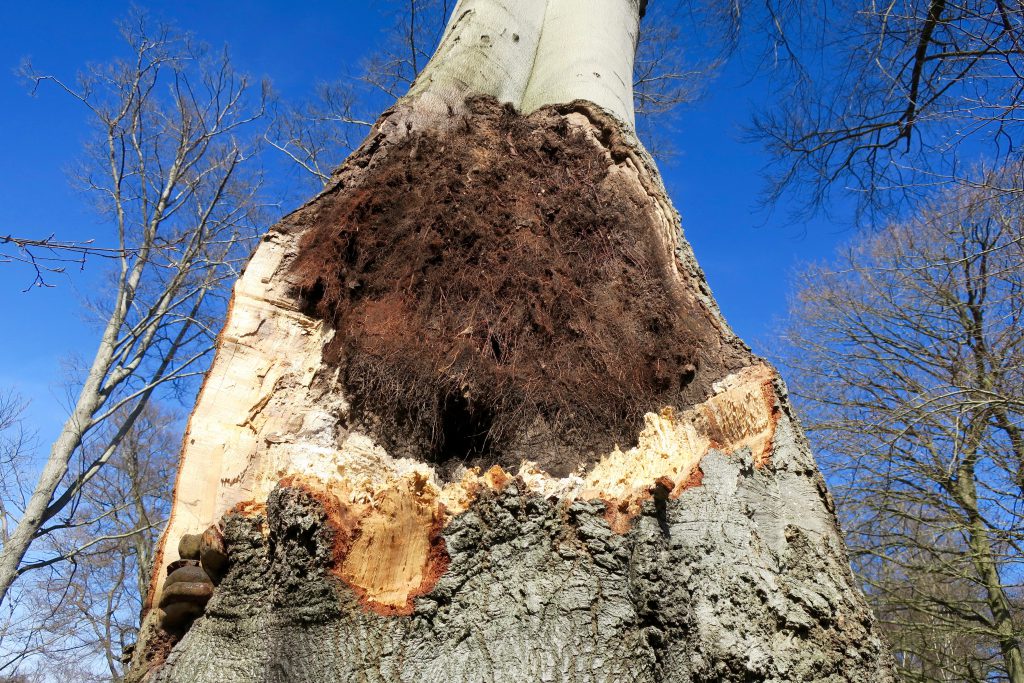
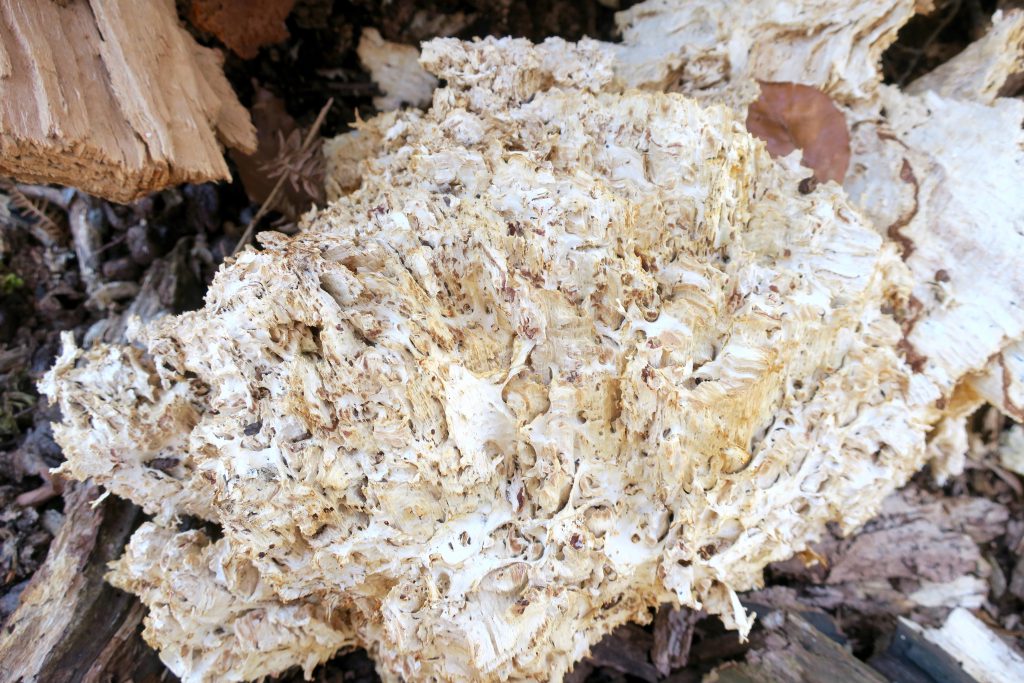
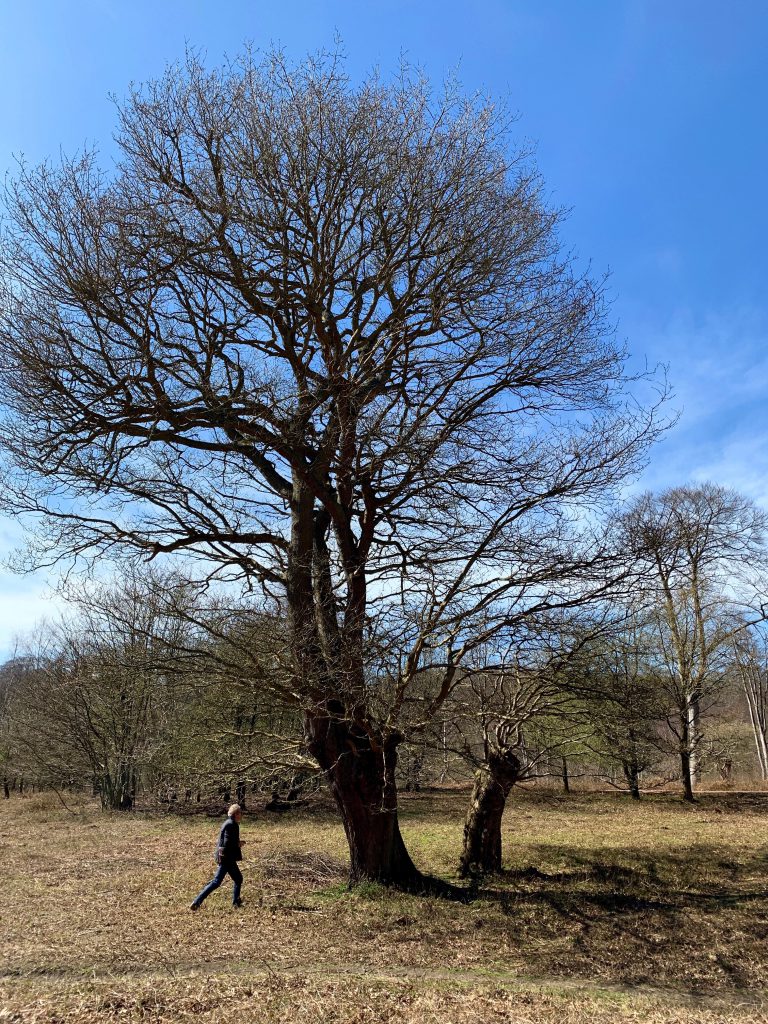
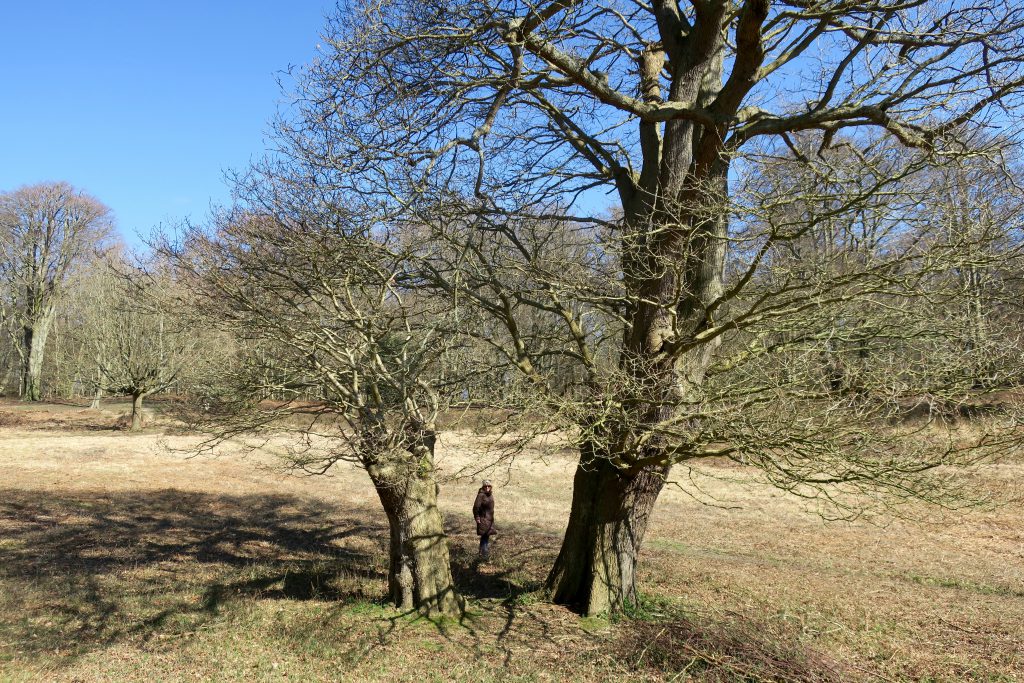
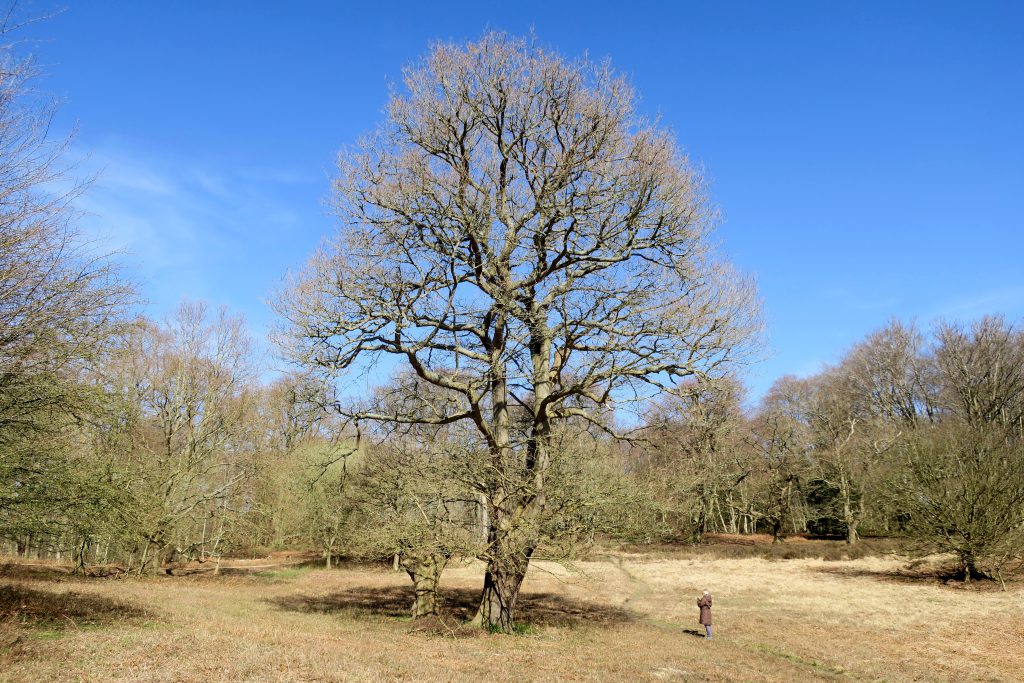
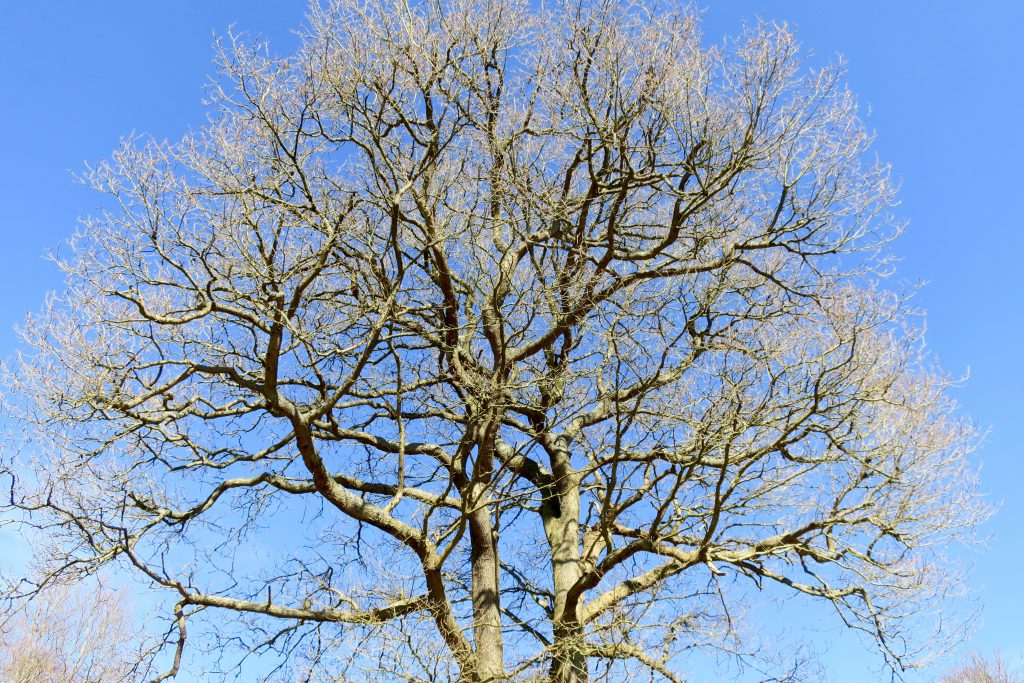
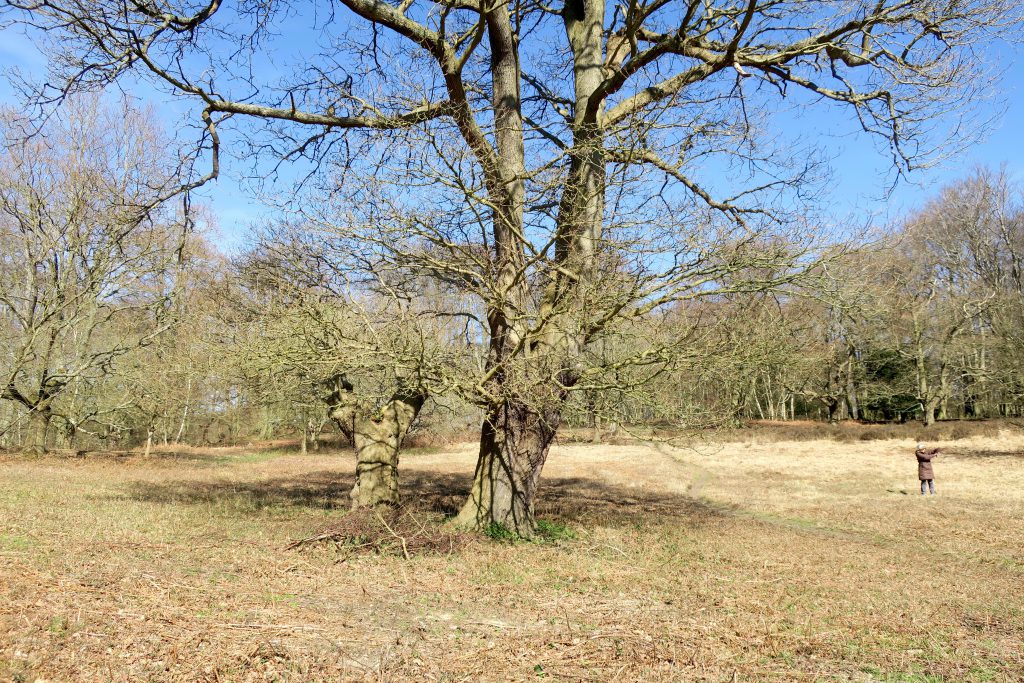
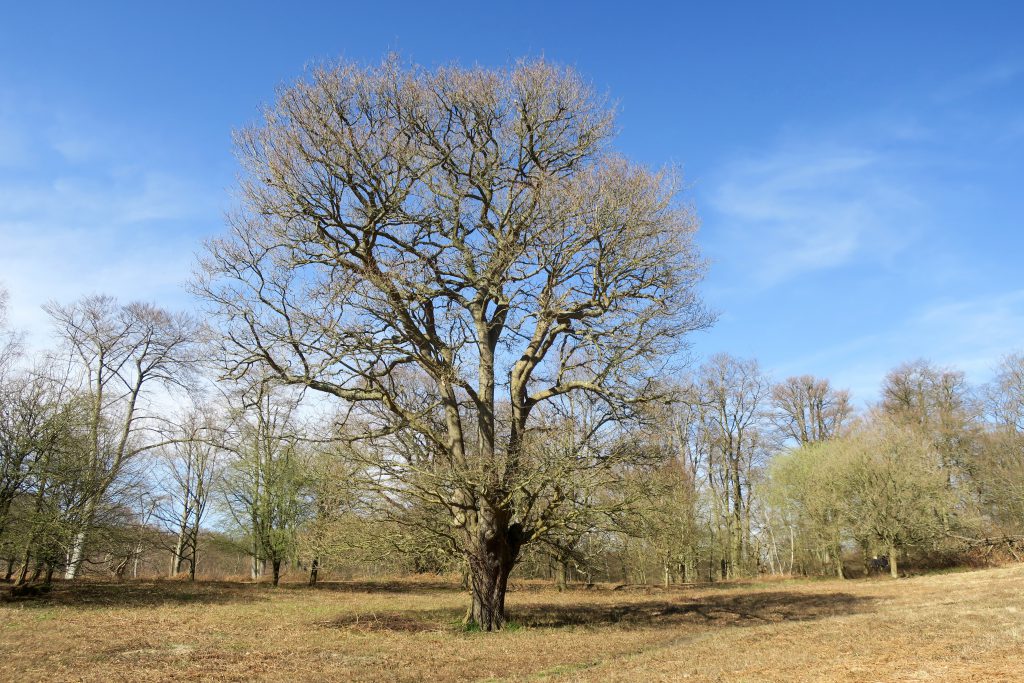
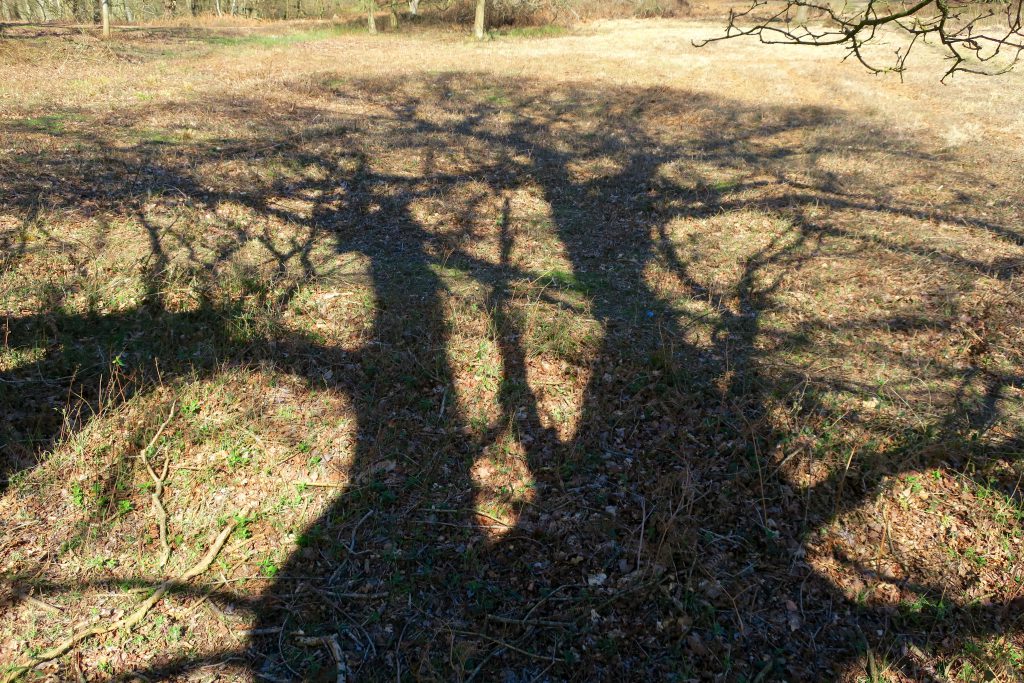
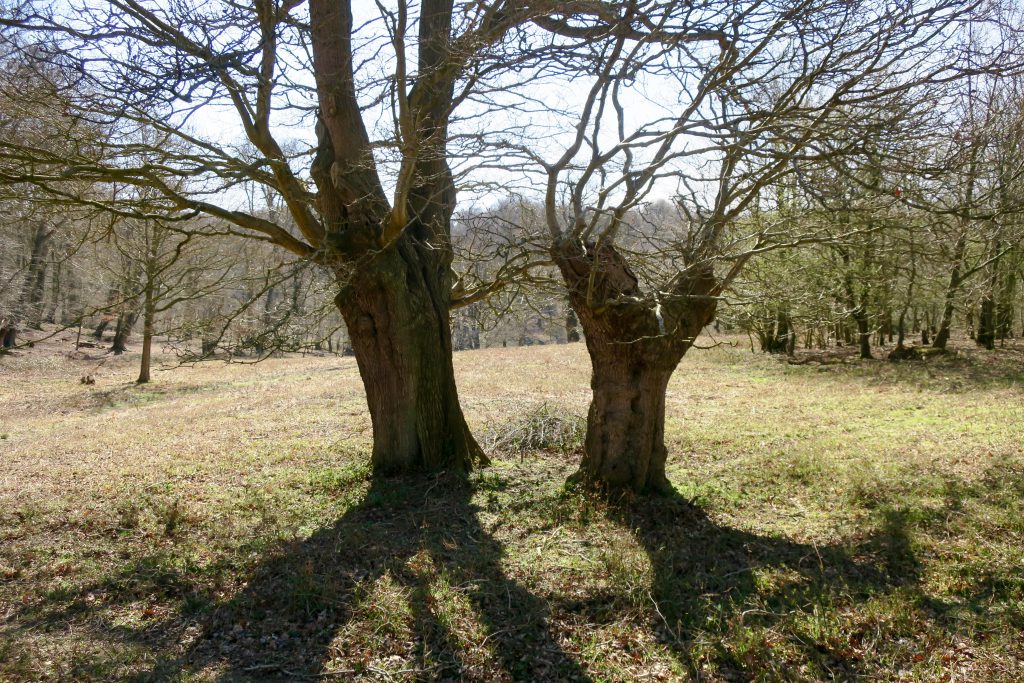
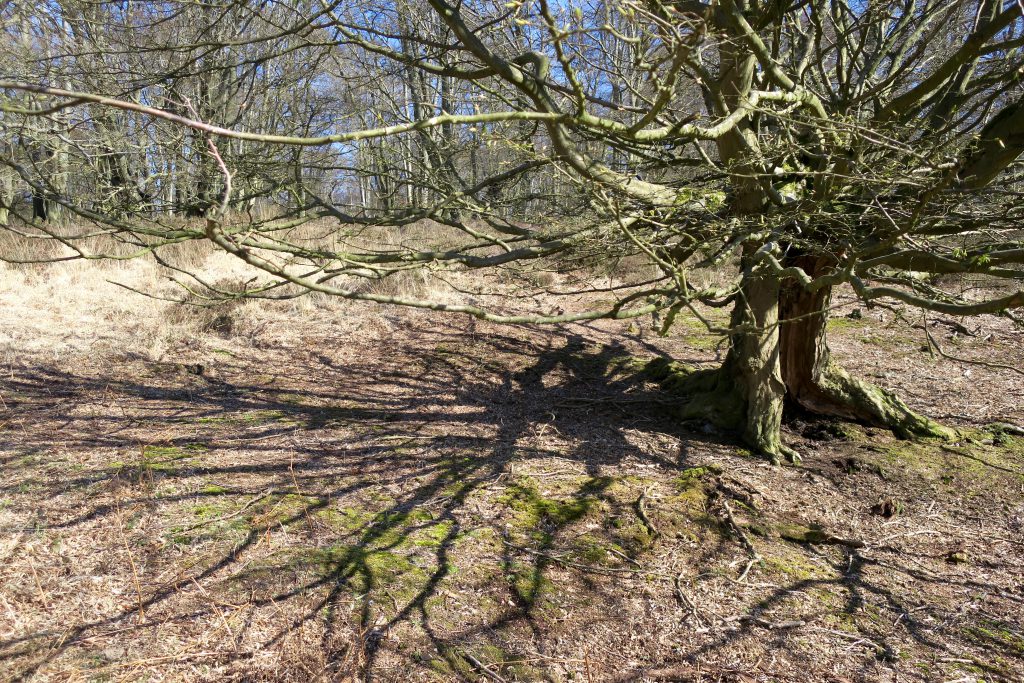
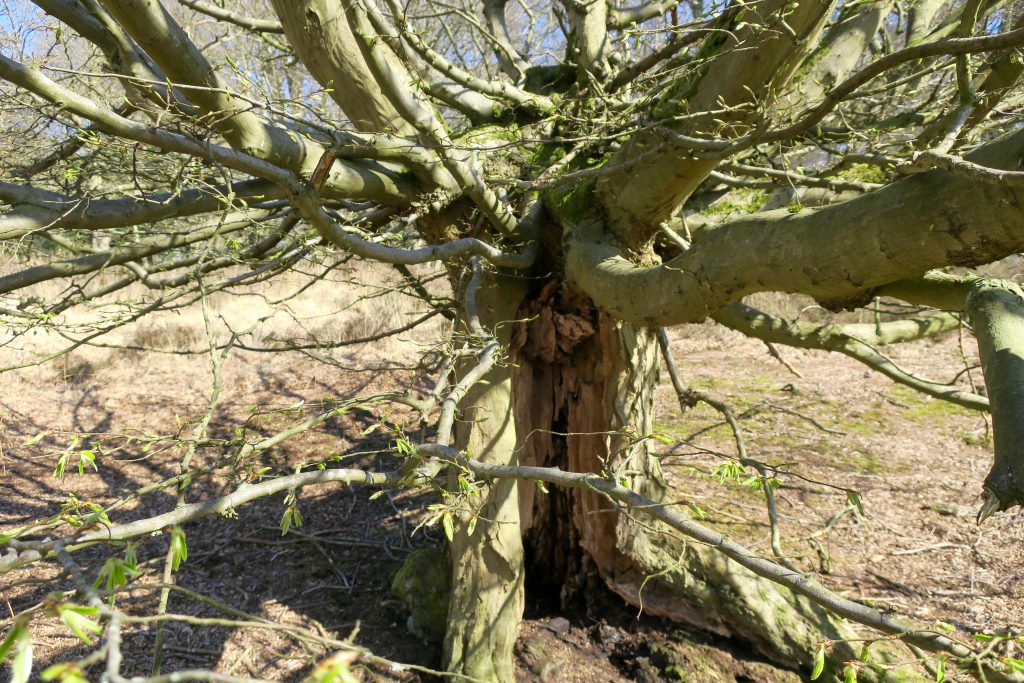
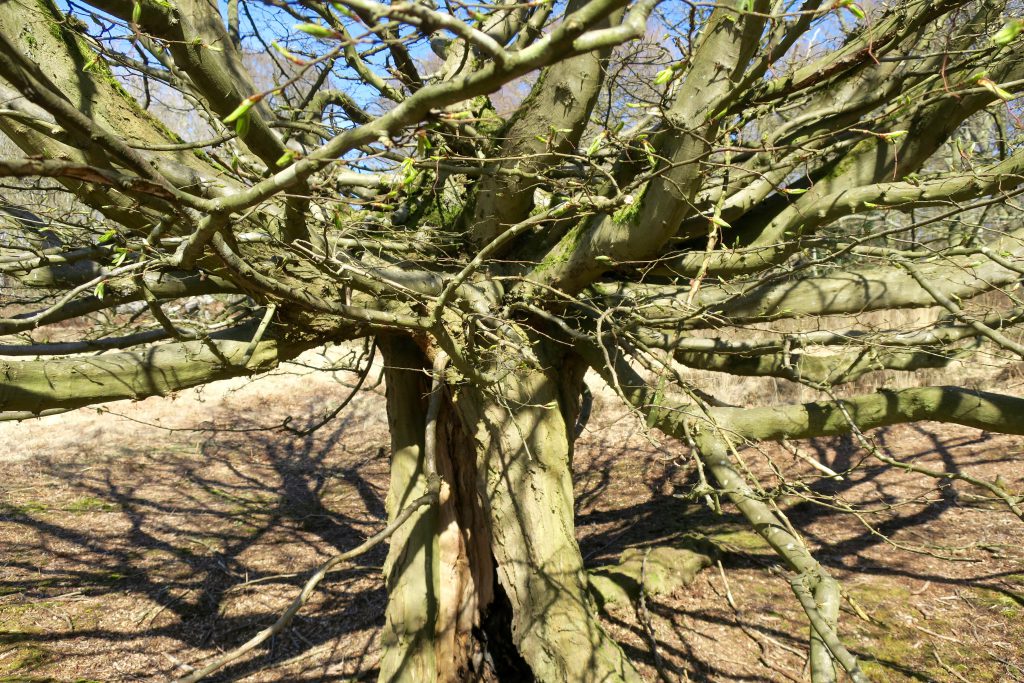
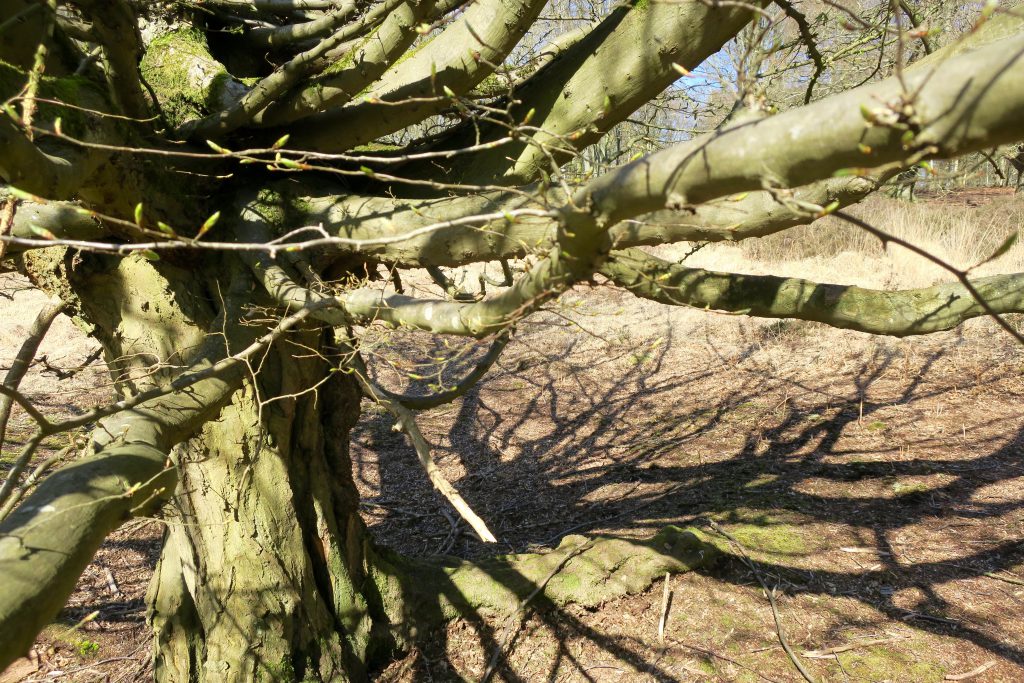

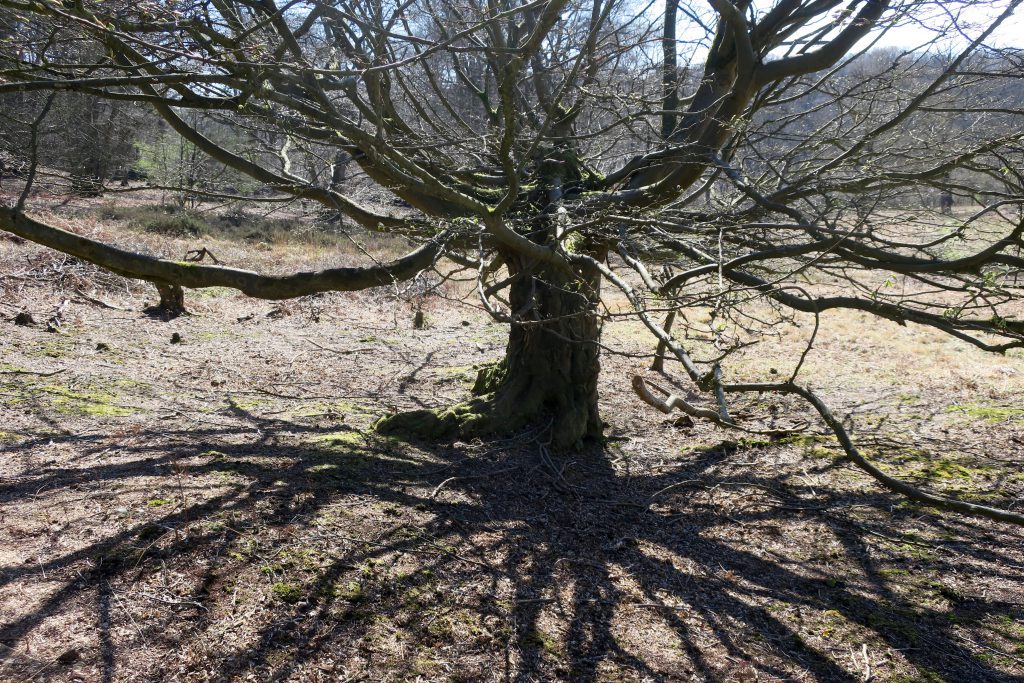
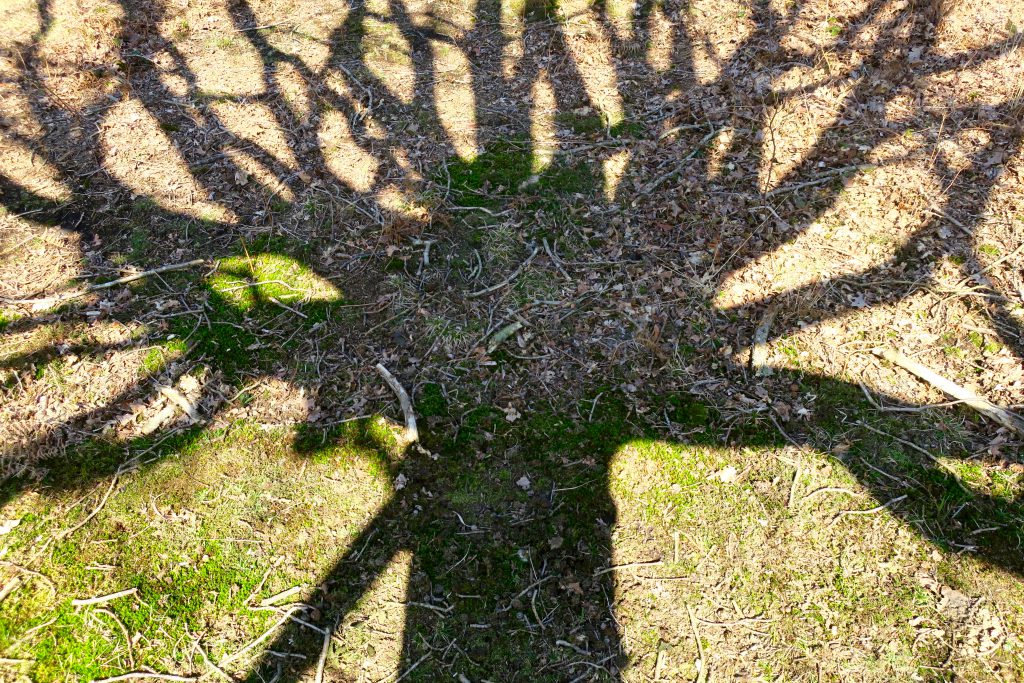


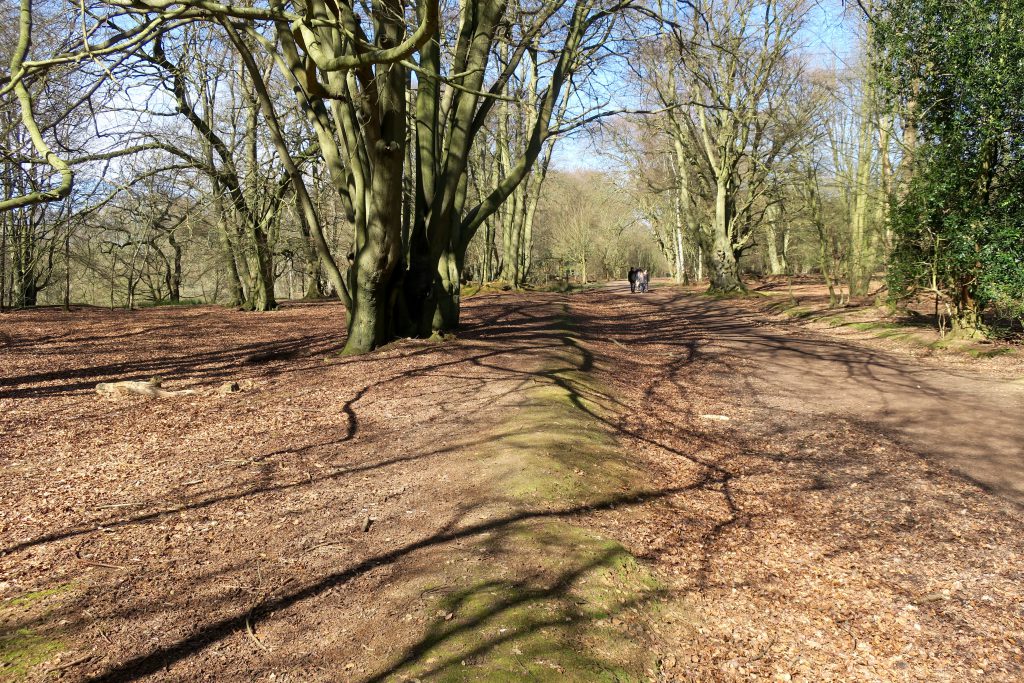
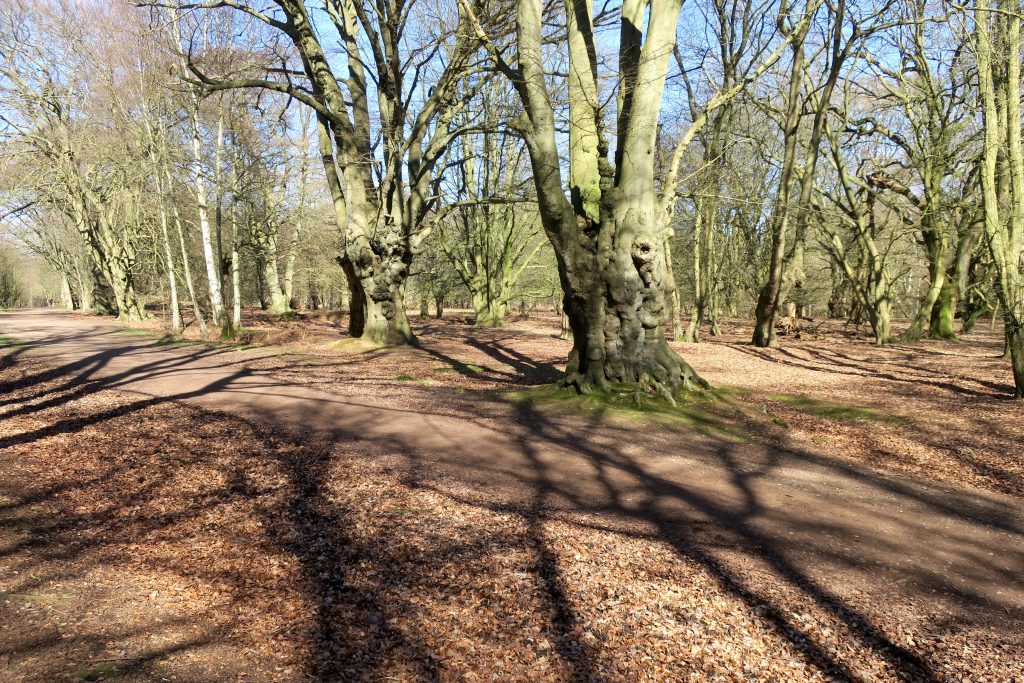
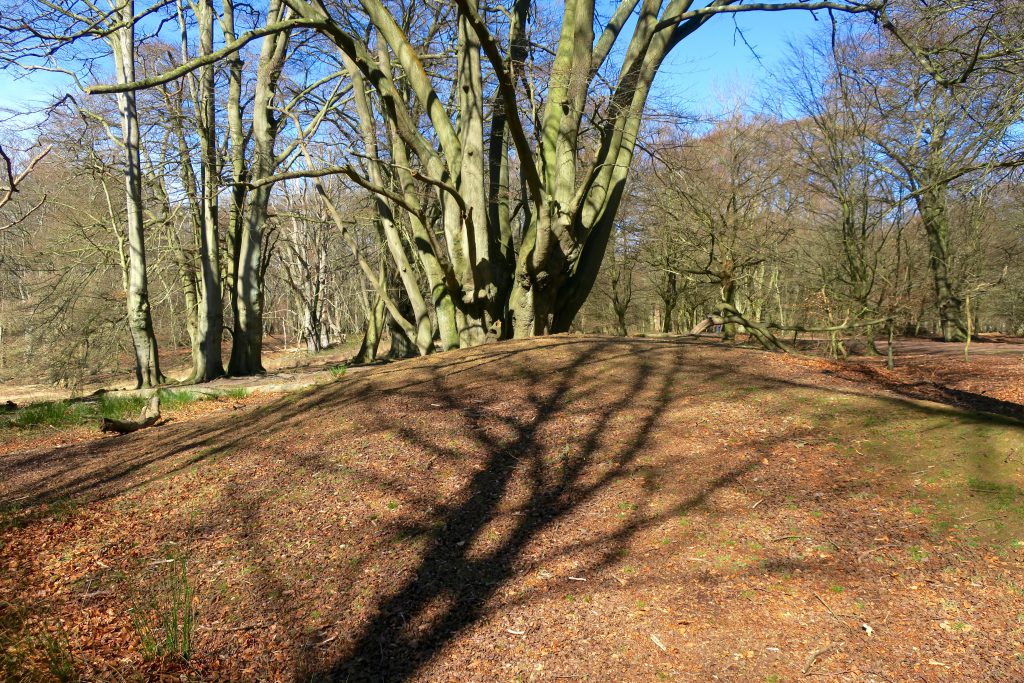
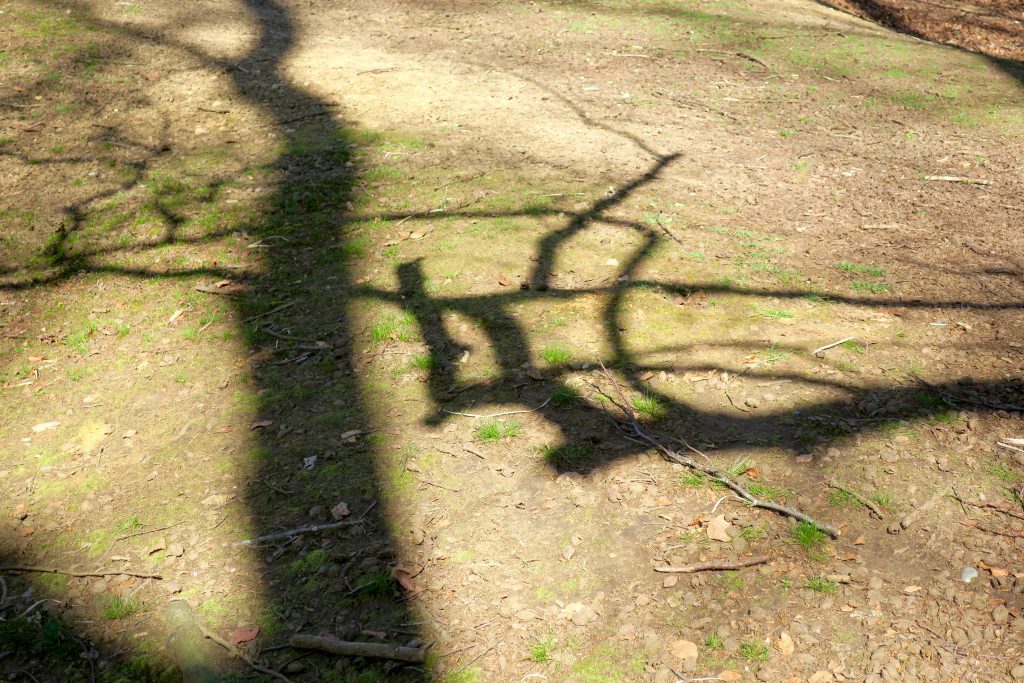
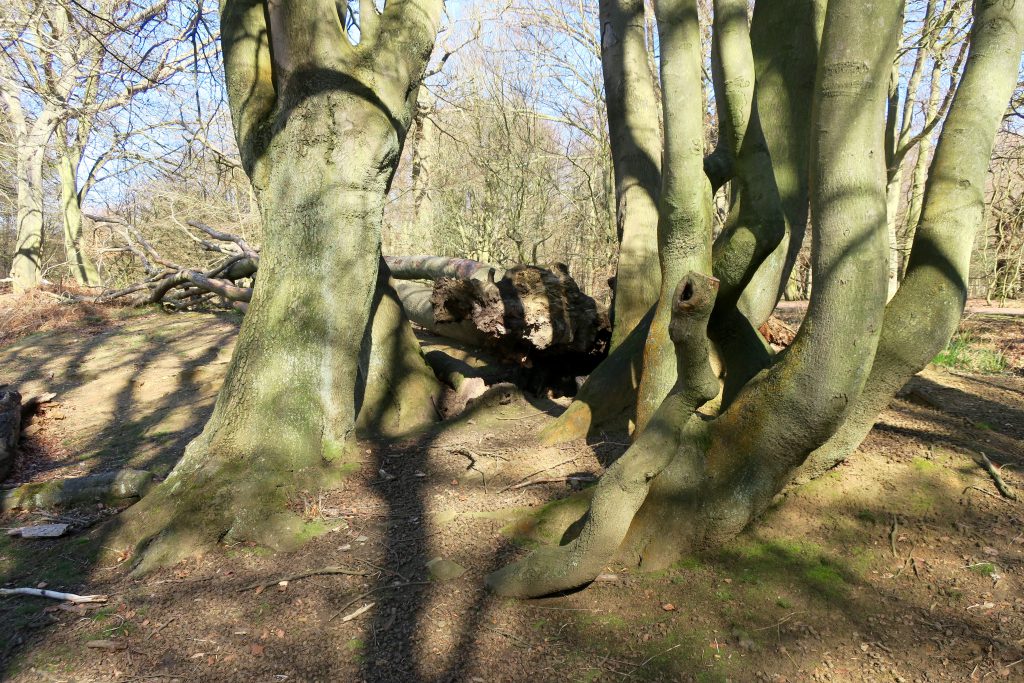
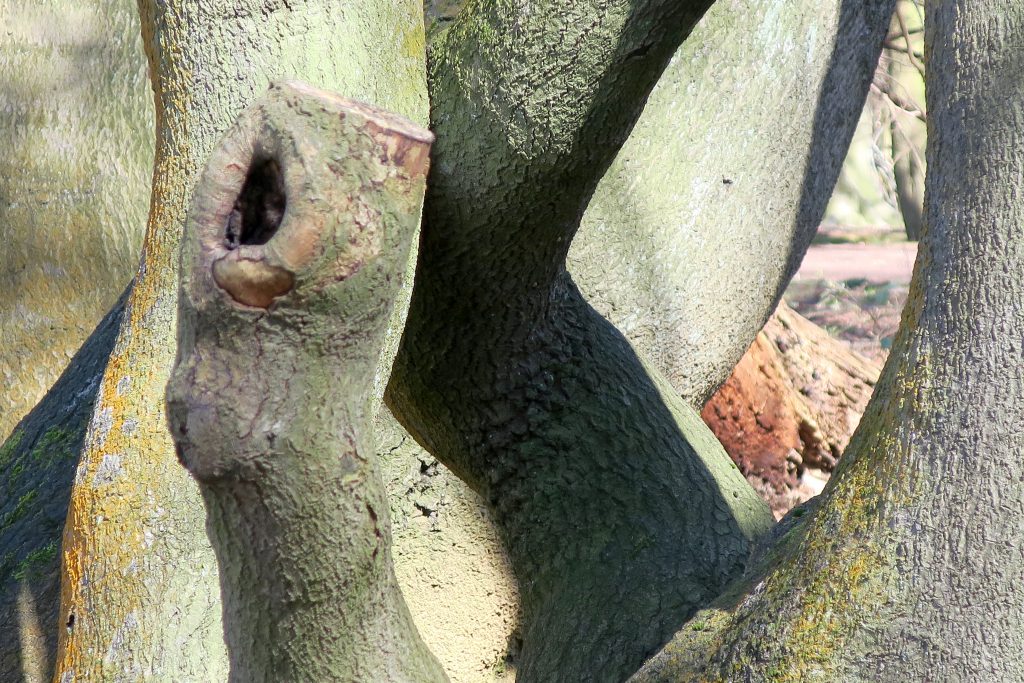
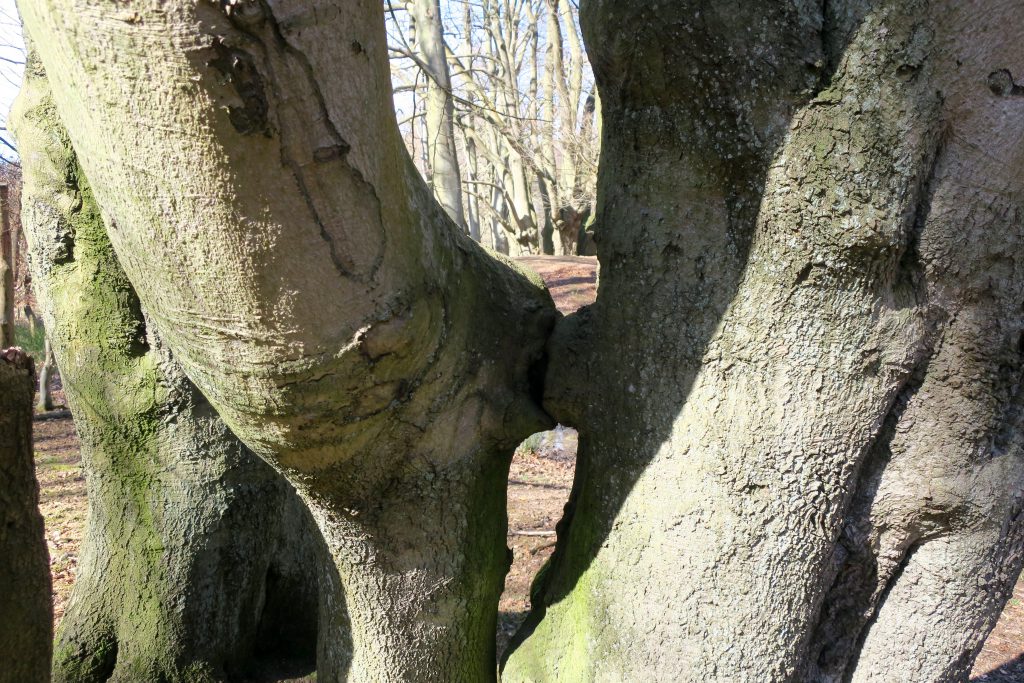
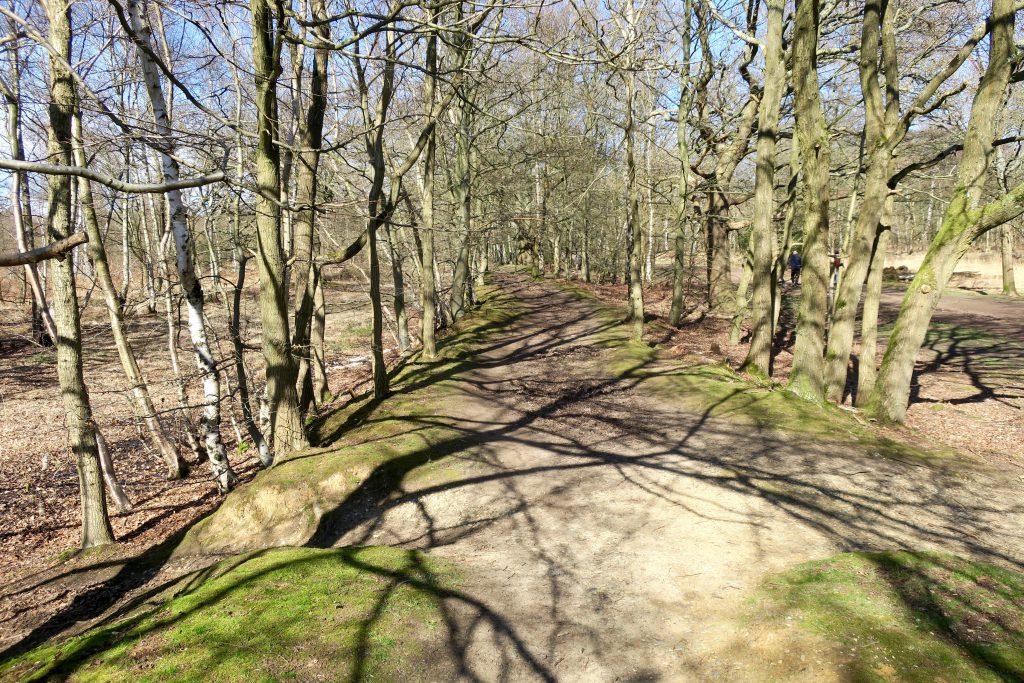

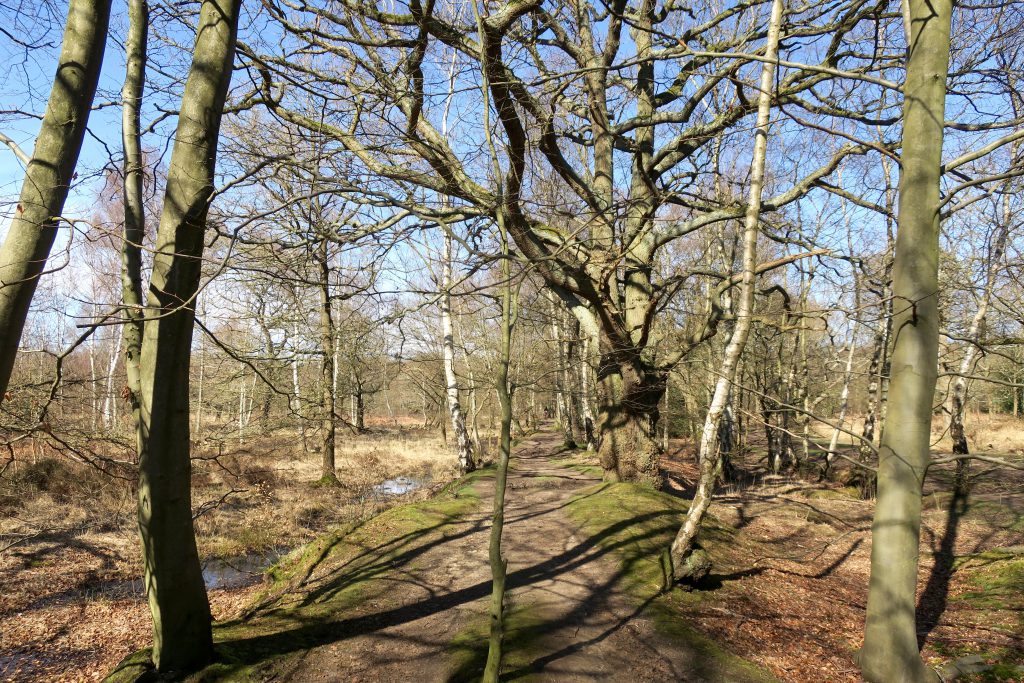
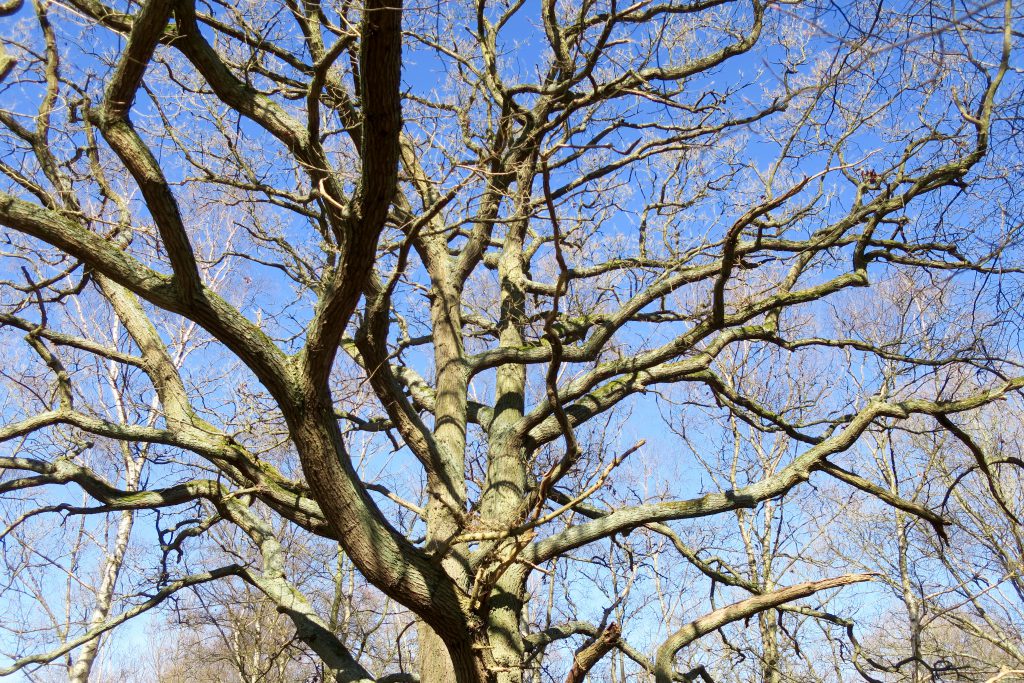
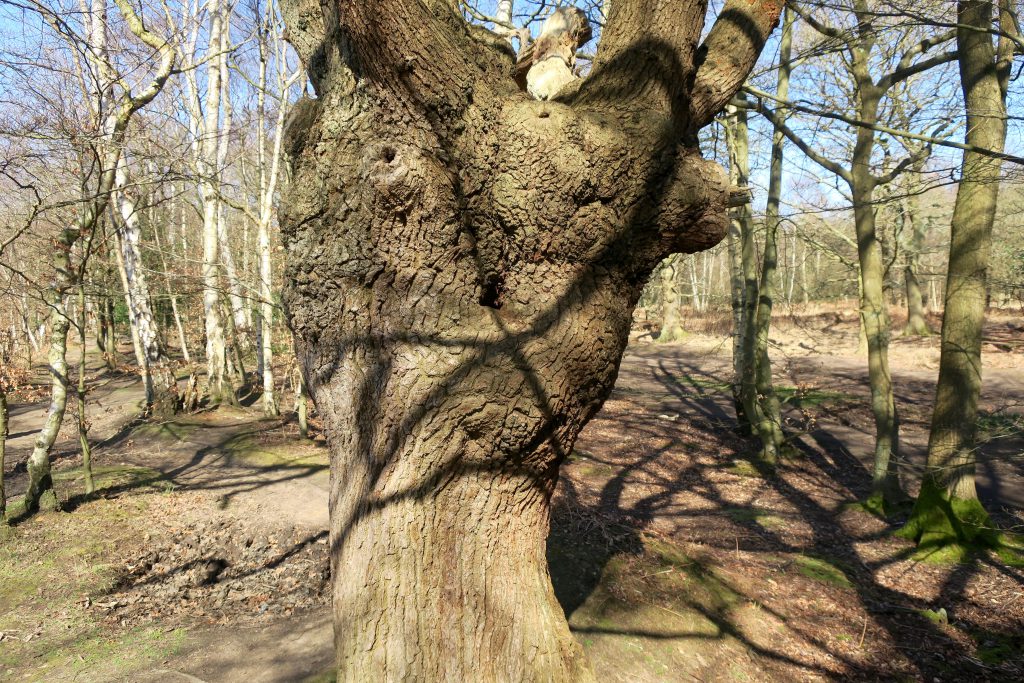
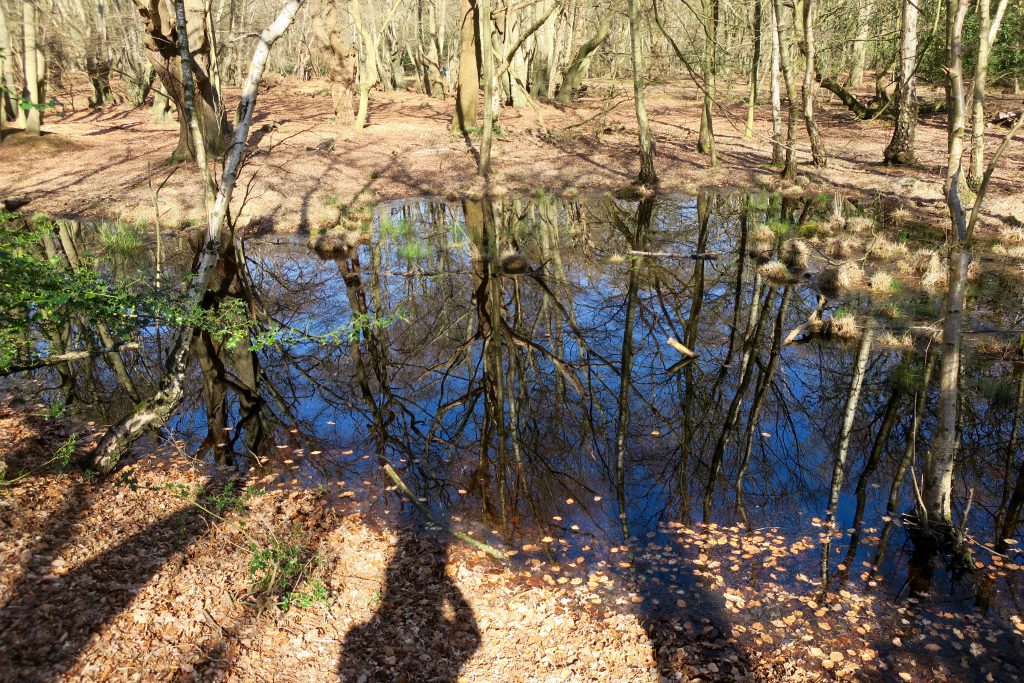
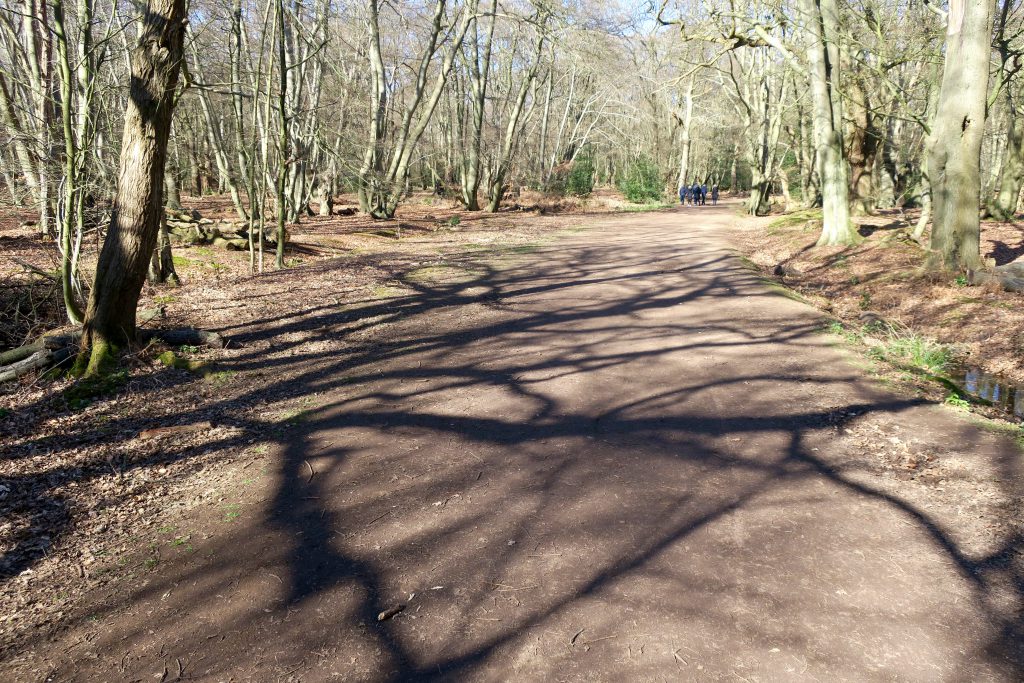
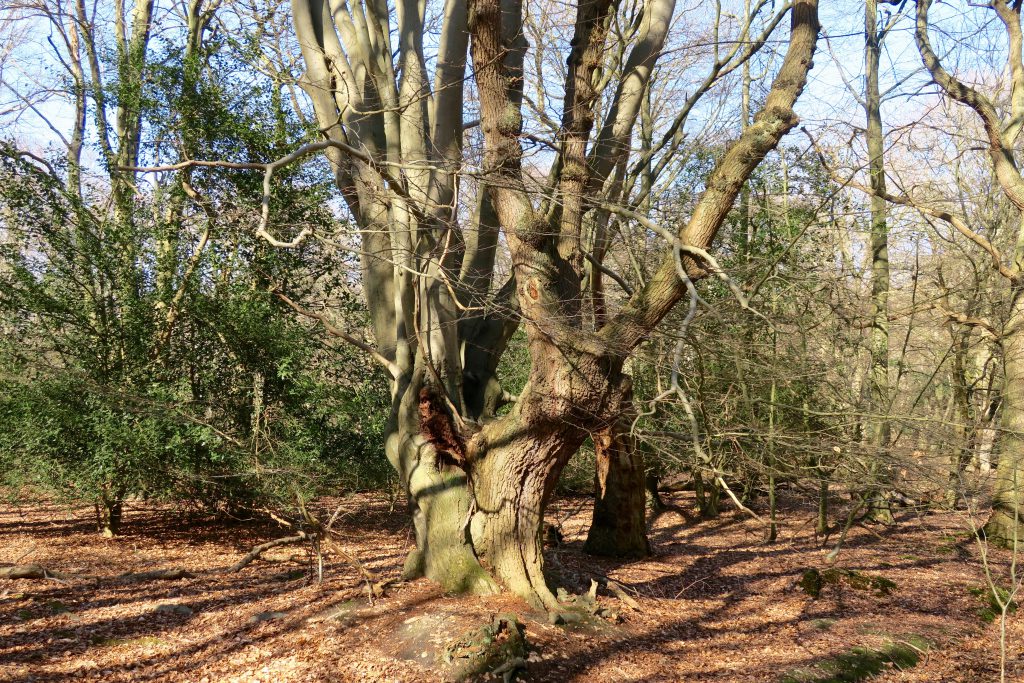
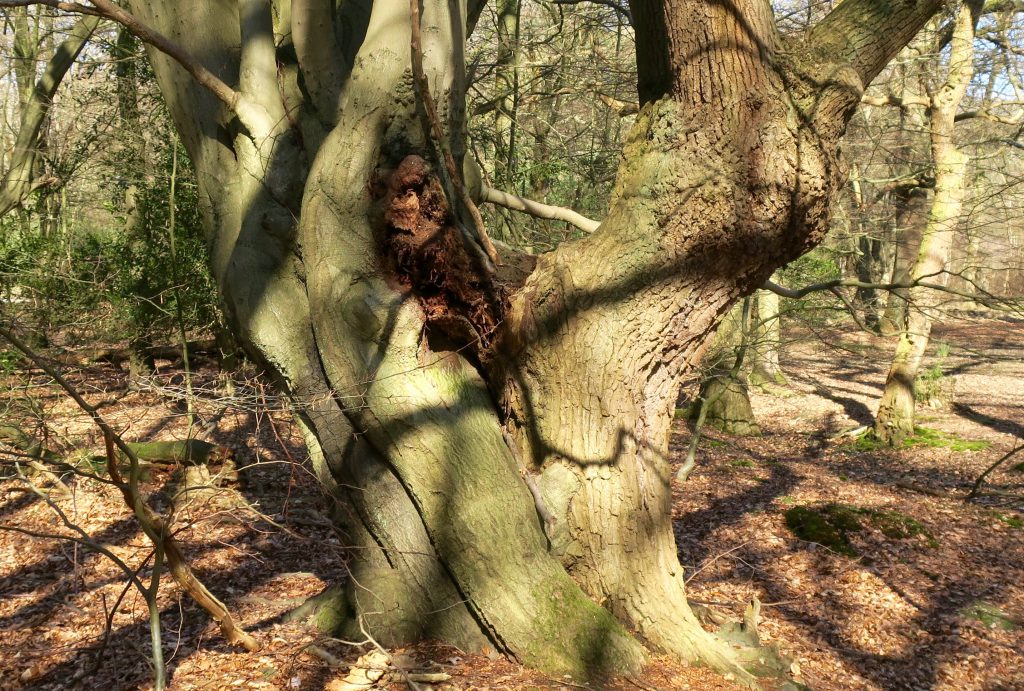
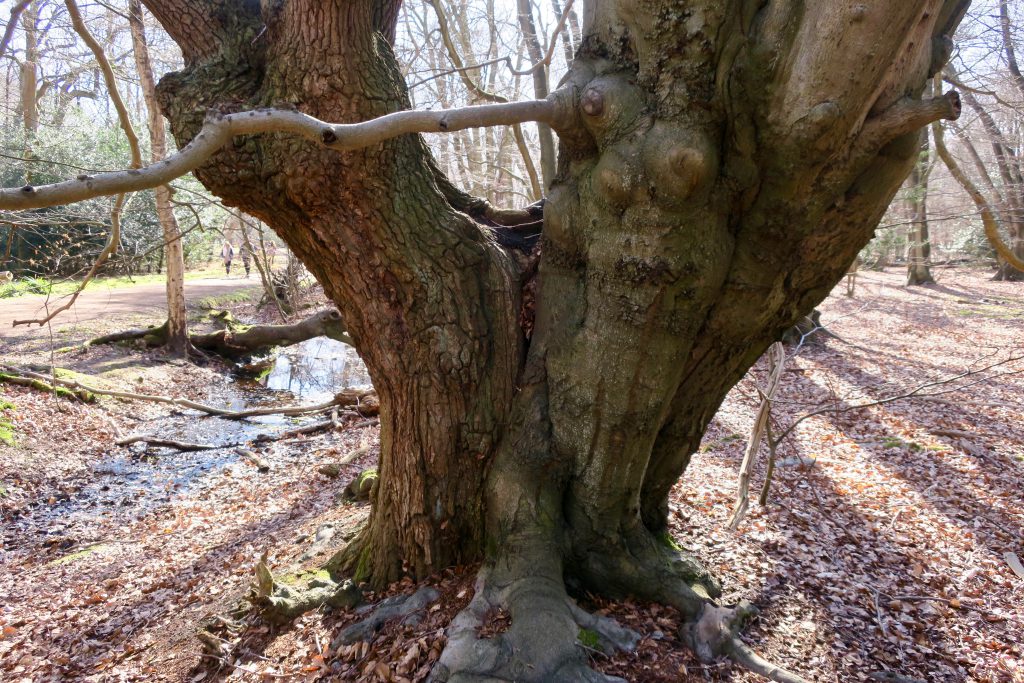
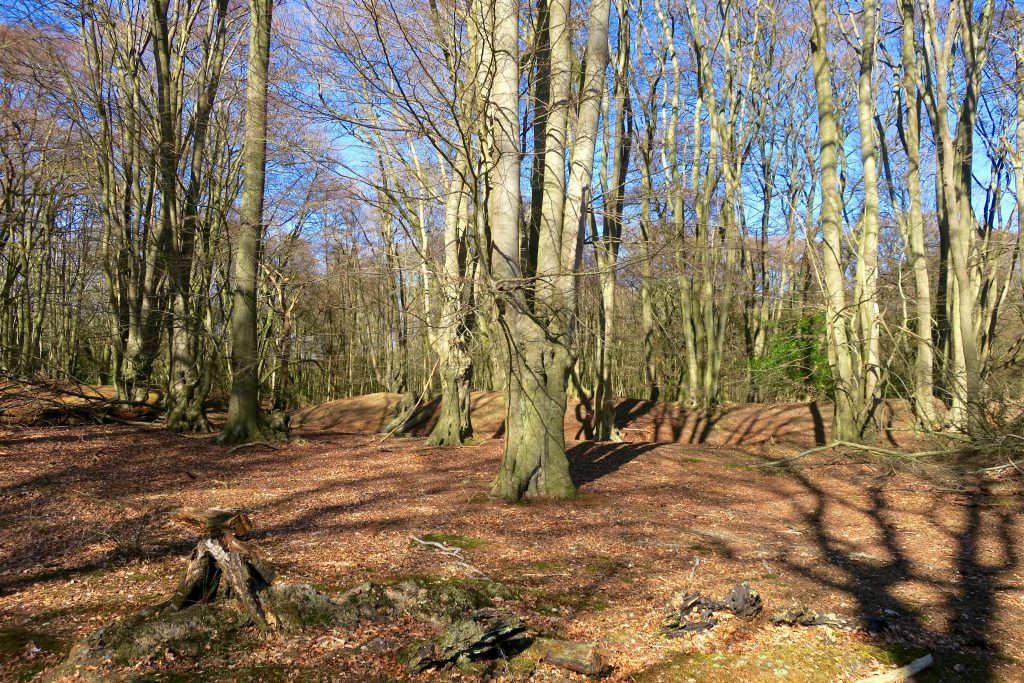
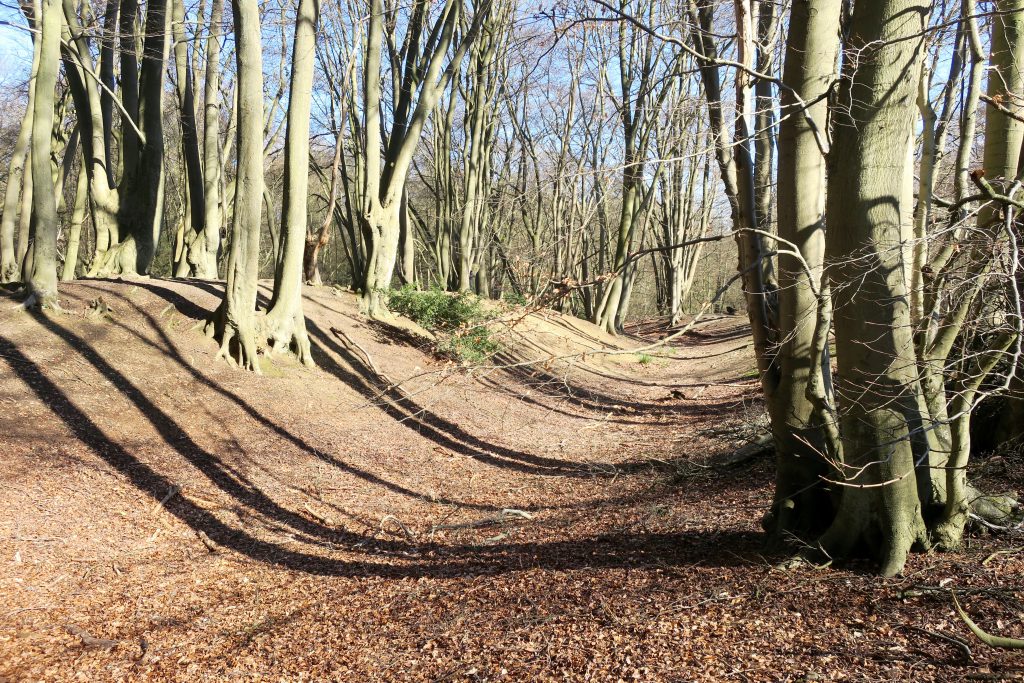
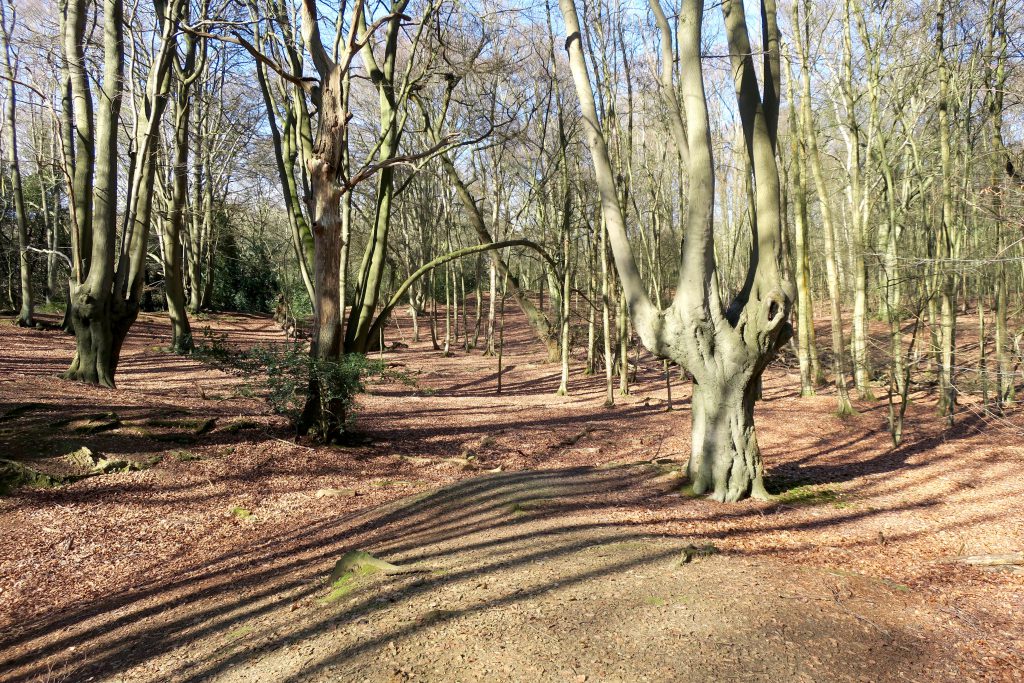

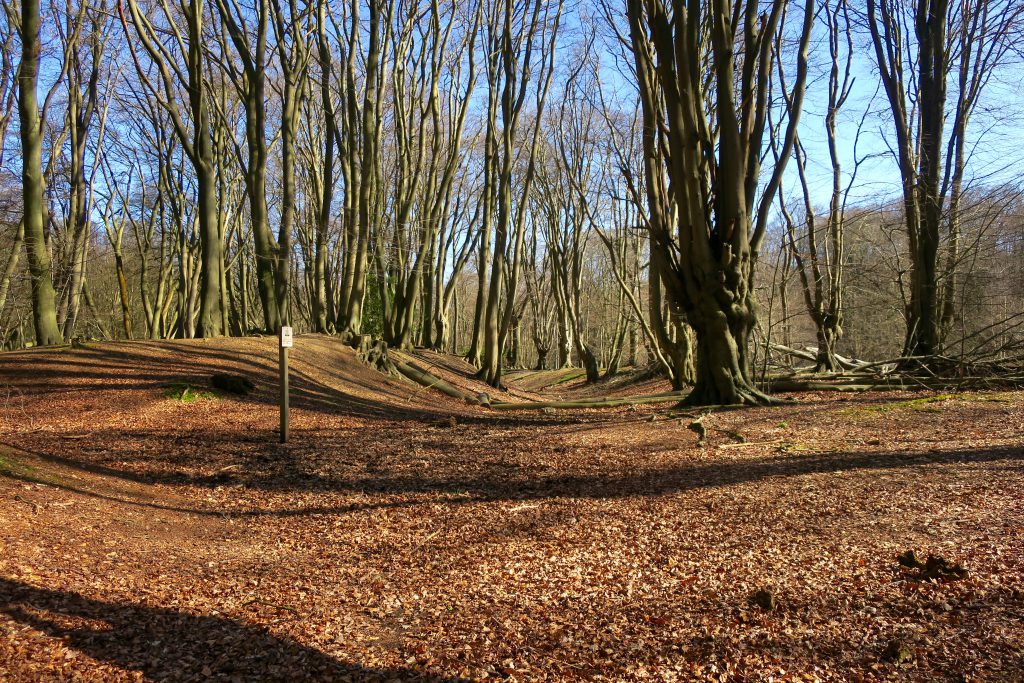
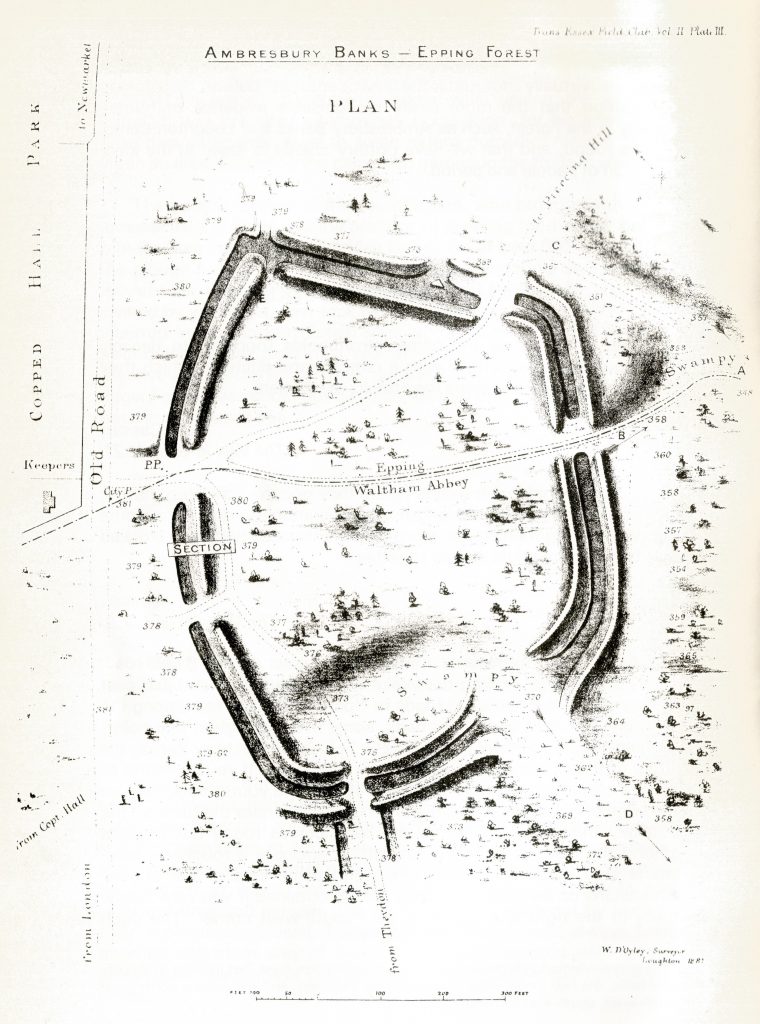
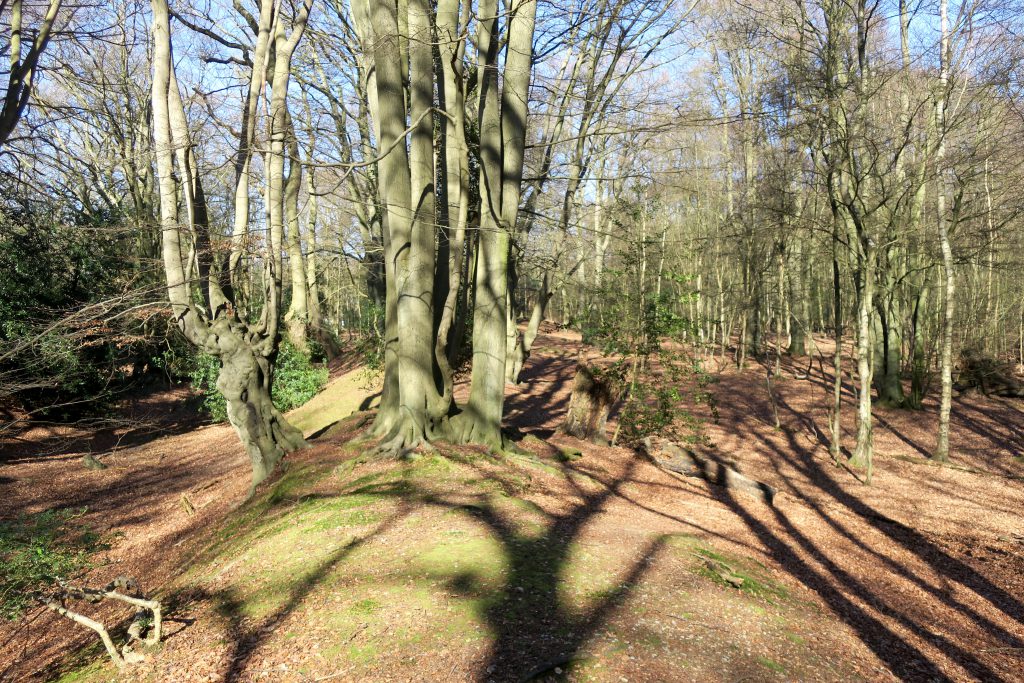
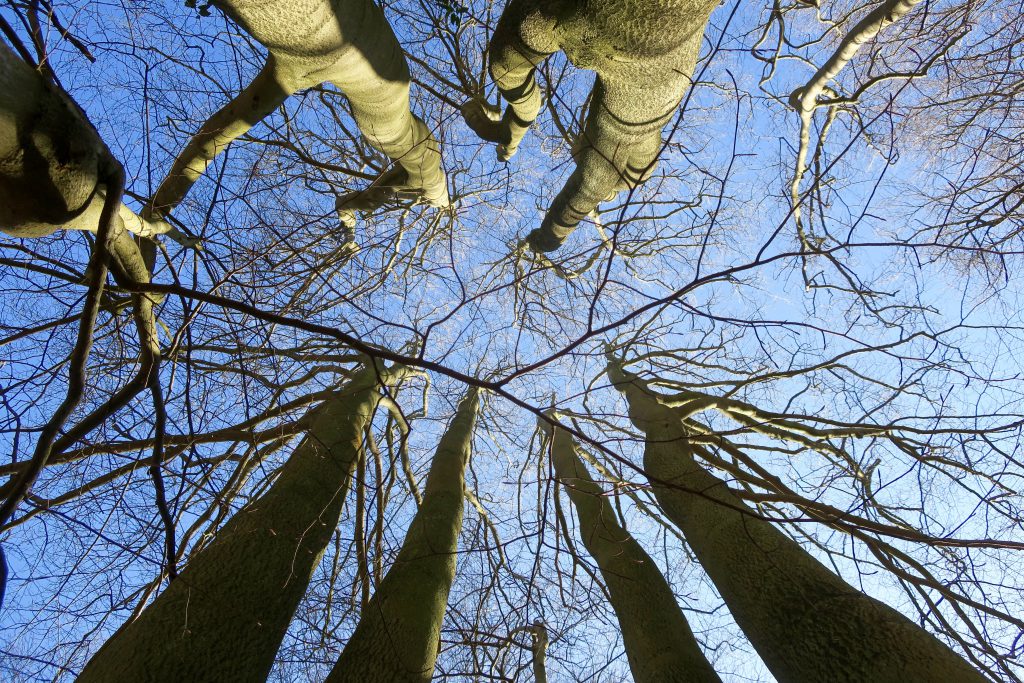
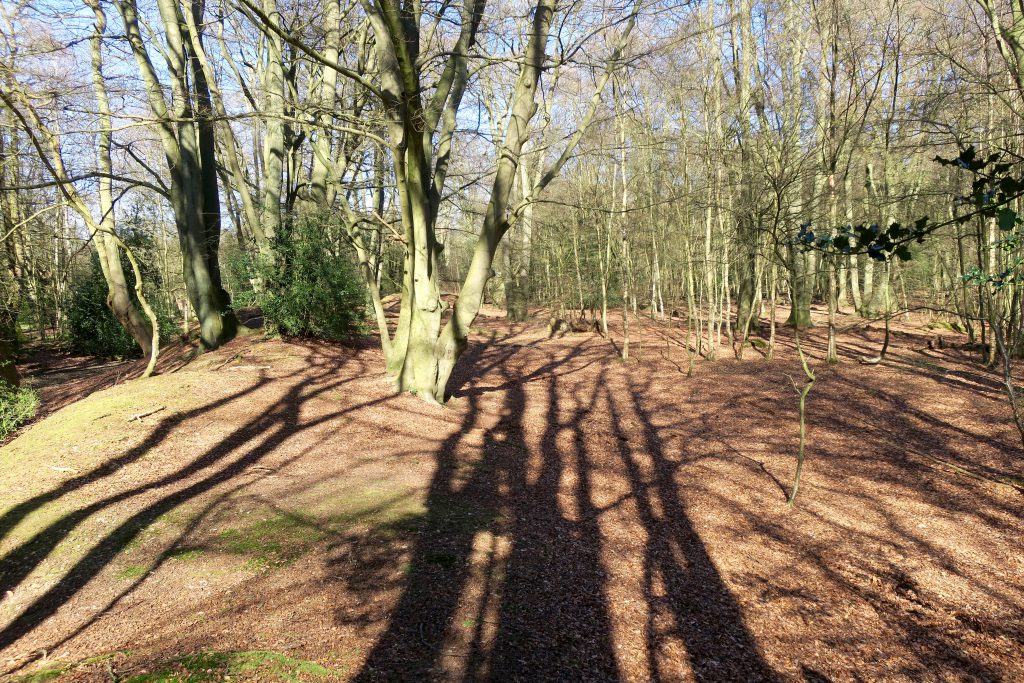
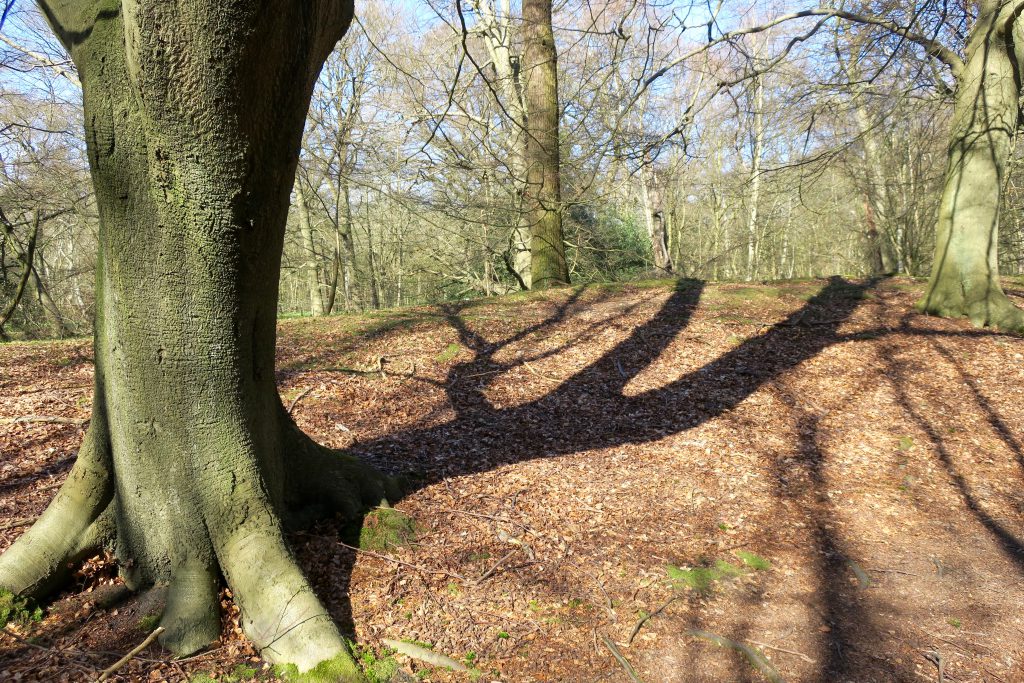
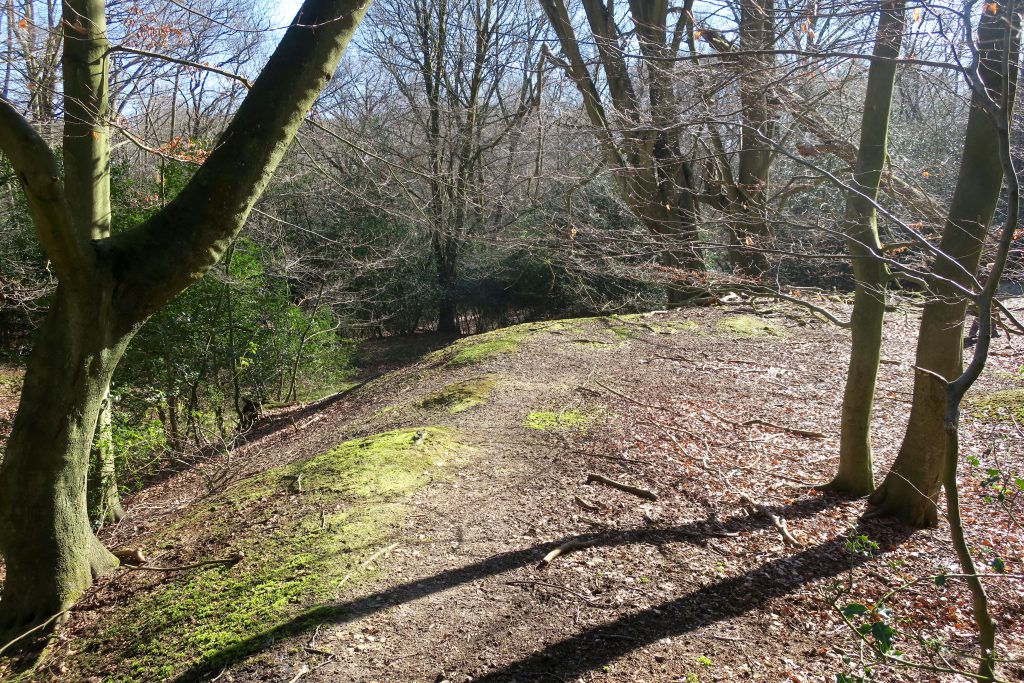
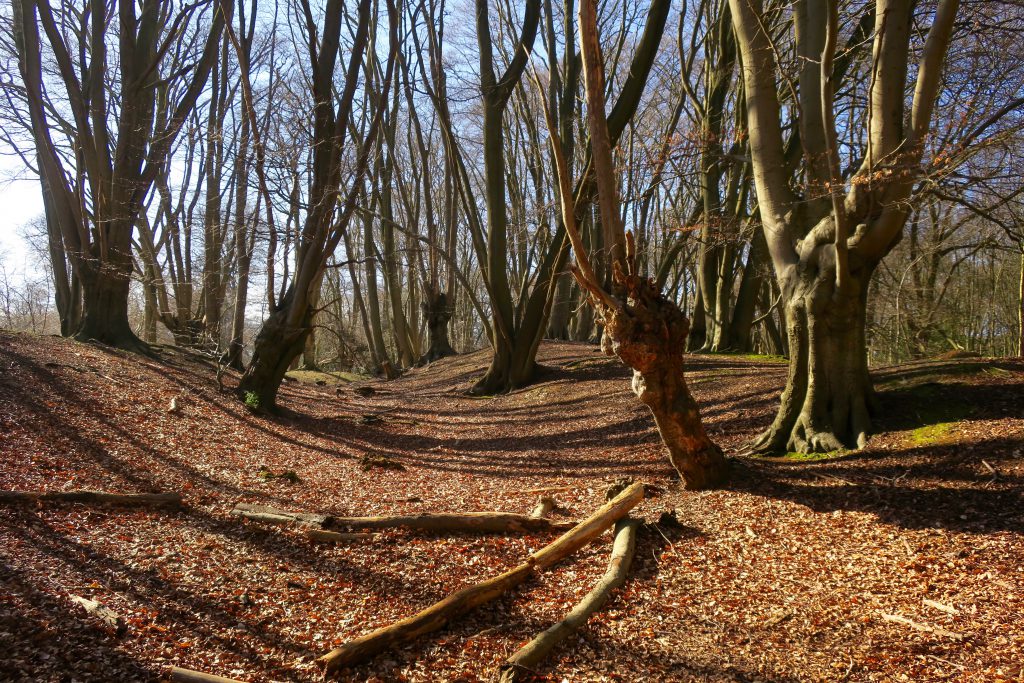
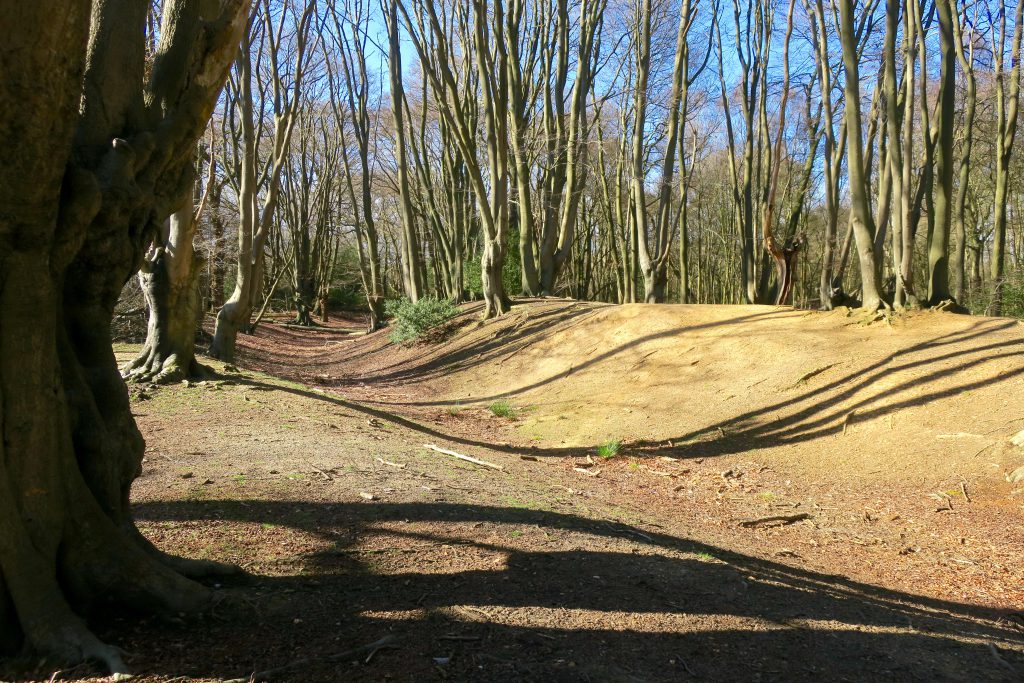
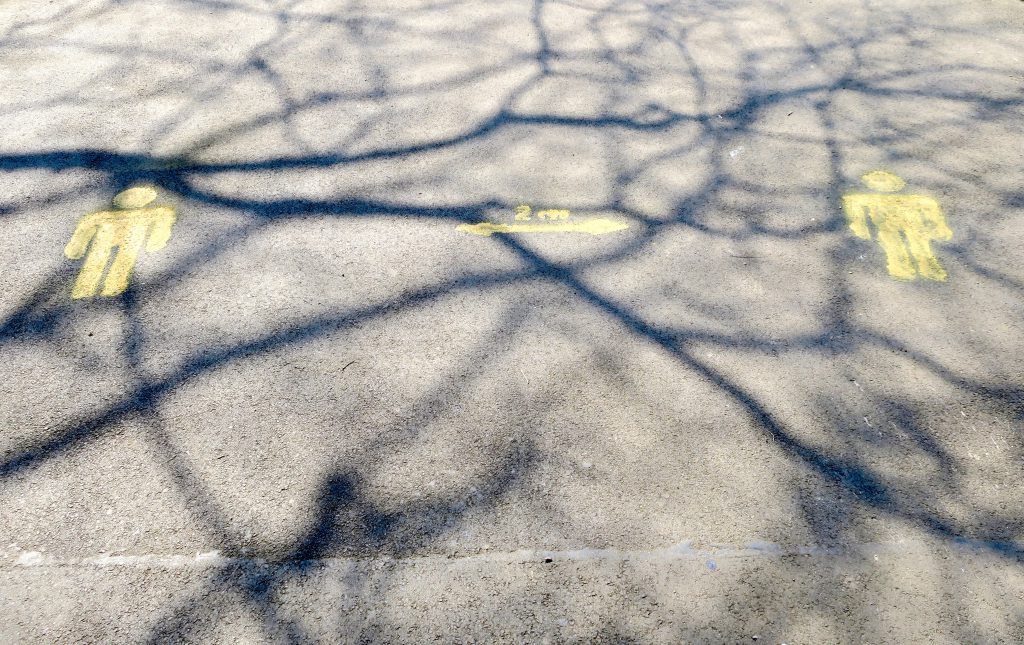
Beautiful …in image, word and deed.
Close to Britain in my heart, but so far away in Sonoma County, where spring is pushing every living thing to burst with joy, I am at home as safe as anyone can be. Your walk is one through nature, and also back through our common history.
Thank you.
Thanks Pat, I think perhaps that was our last taste of freedom for a while. I’m glad you enjoyed it. One day, on our way to San Francisco, we might just pay you a surprise visit!
Brilliant photos, Chris. Love the fallen tree in b/w
Hey Will, good to hear from you. It was the Sunday before last and the light was fantastic. Hard to take a bad photo. I hope you’re keeping well. Take care and love to your family.